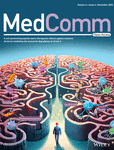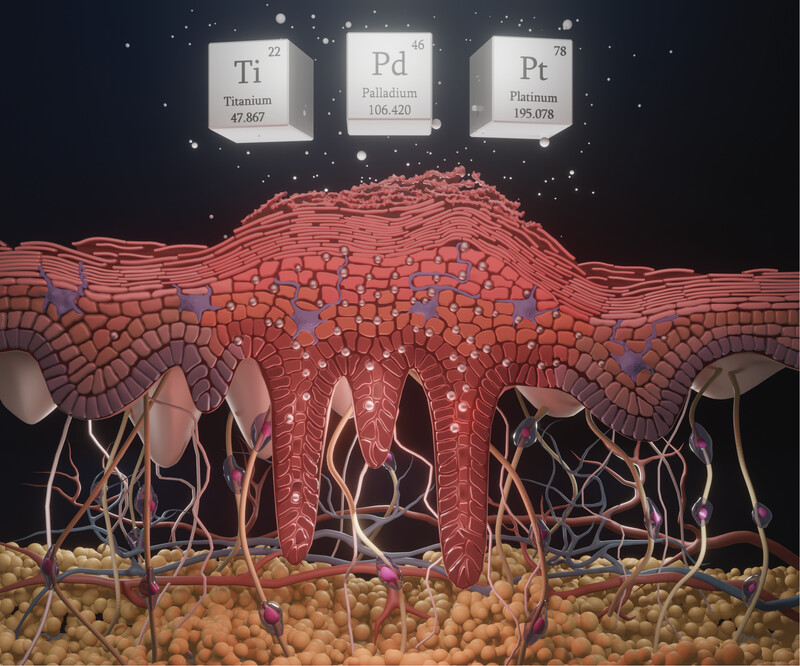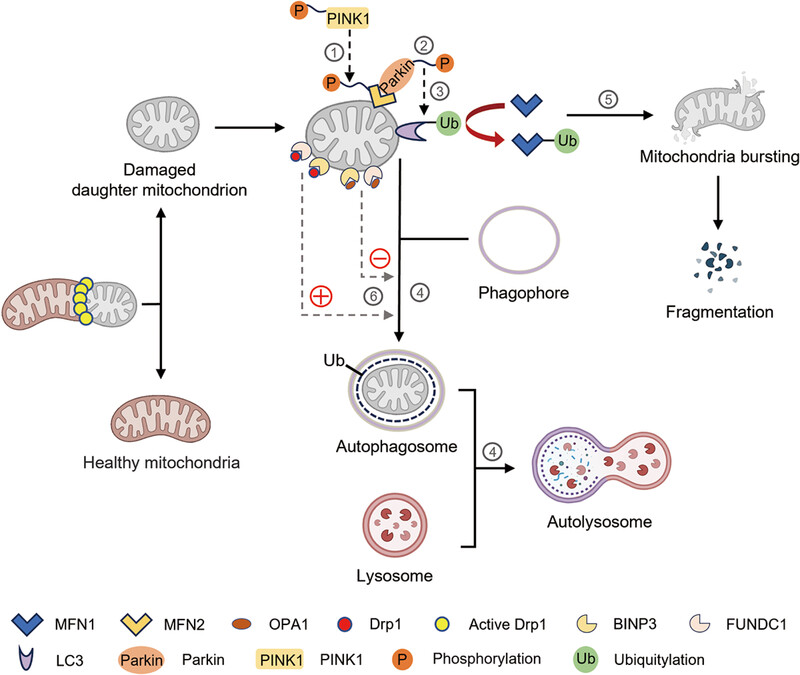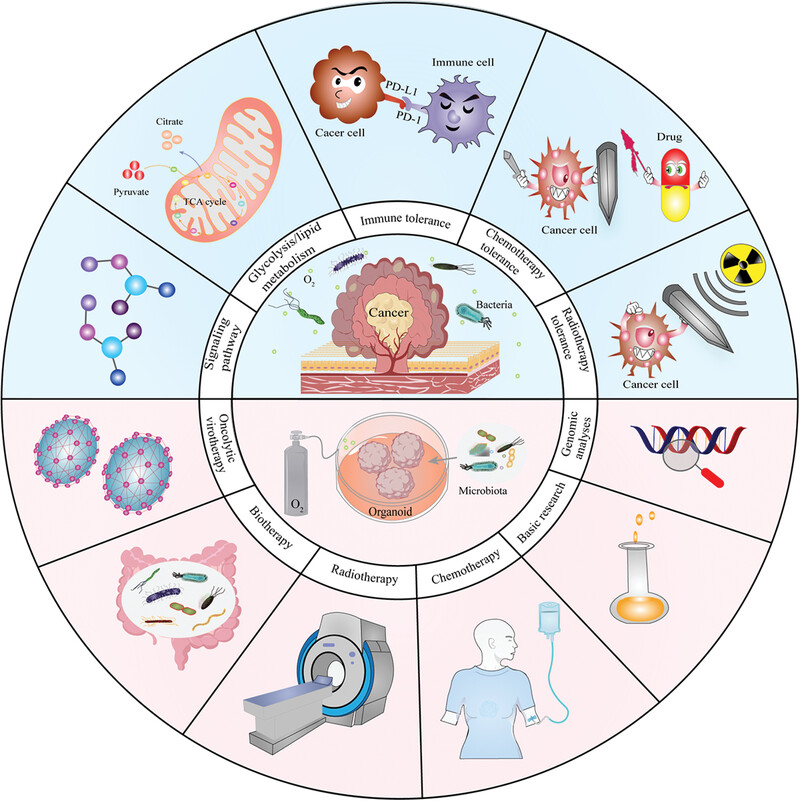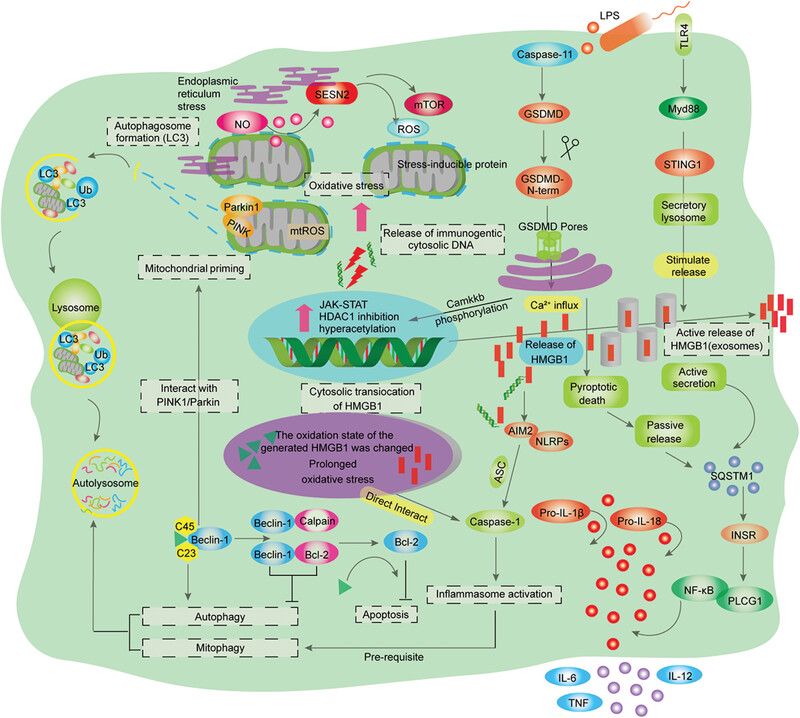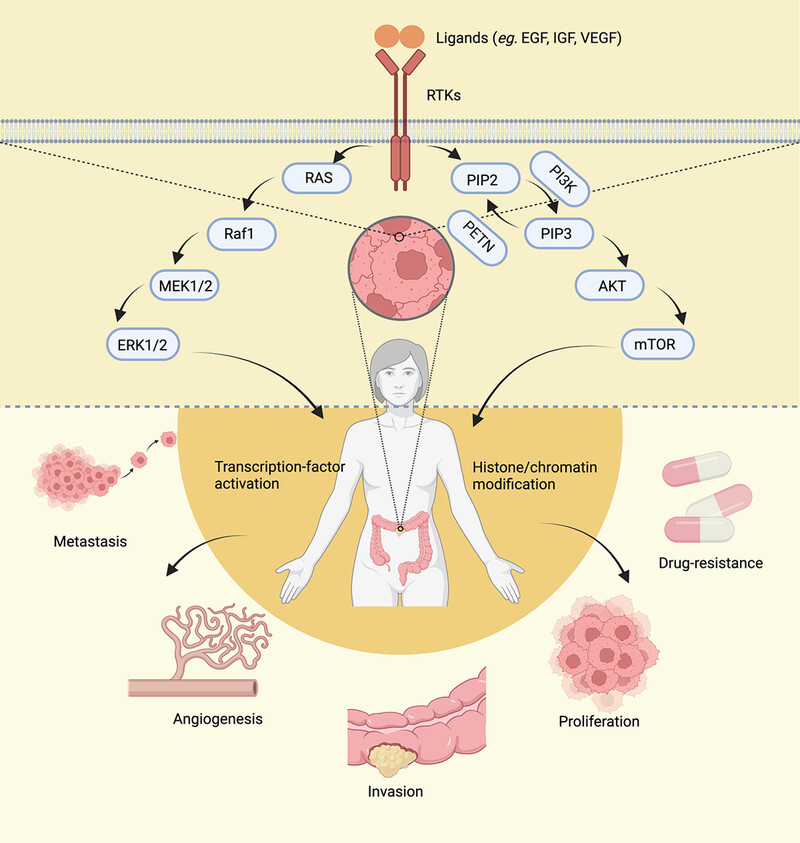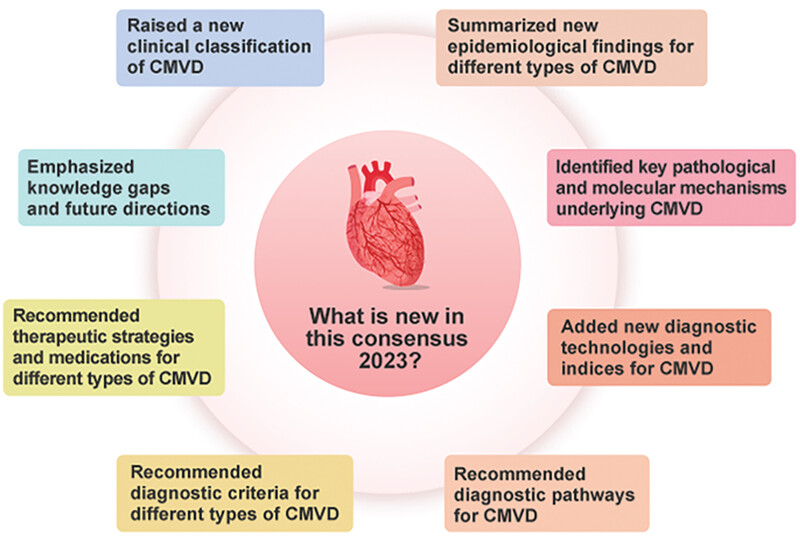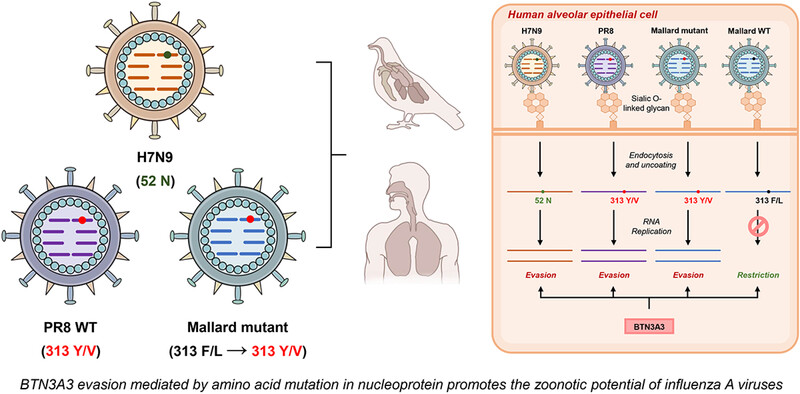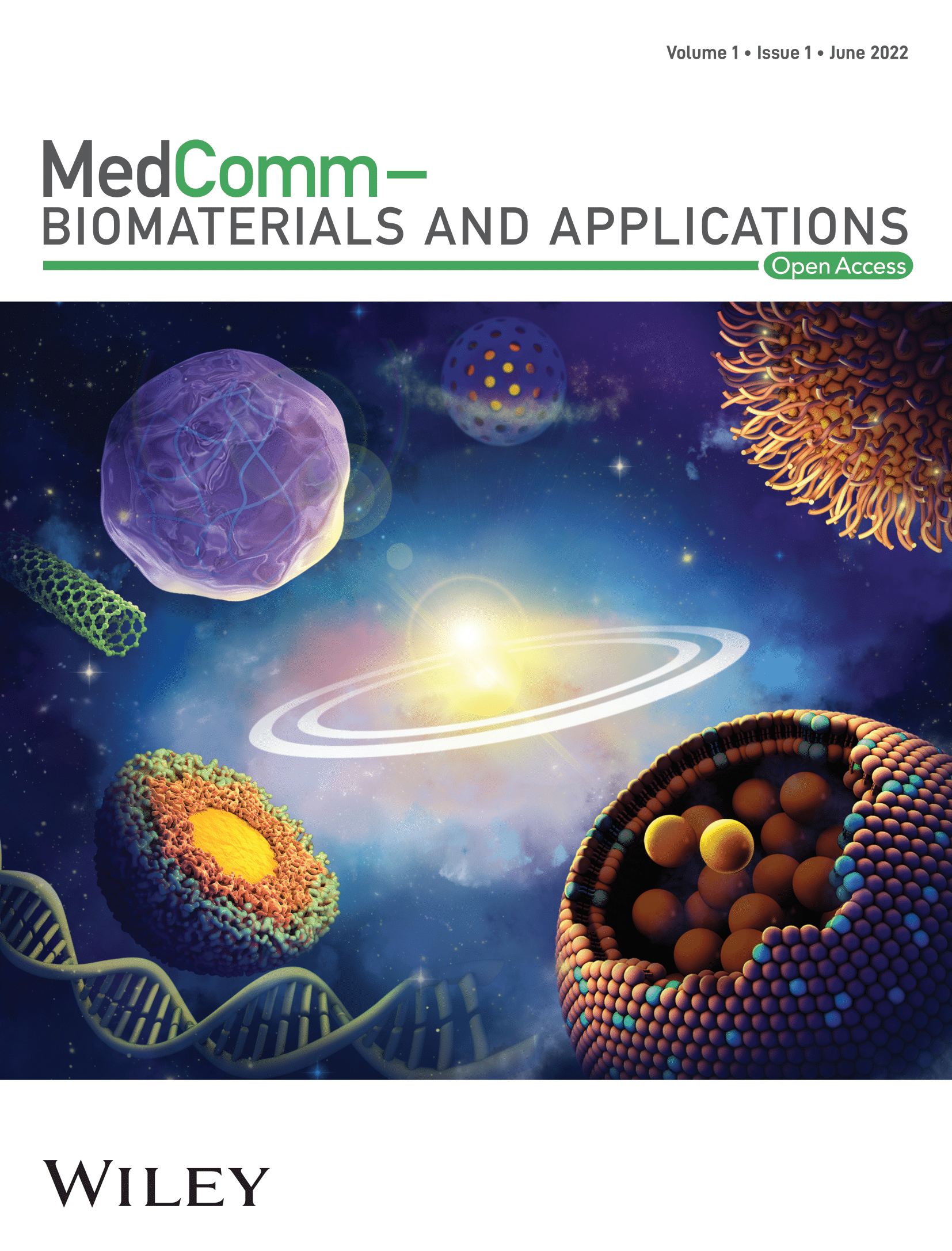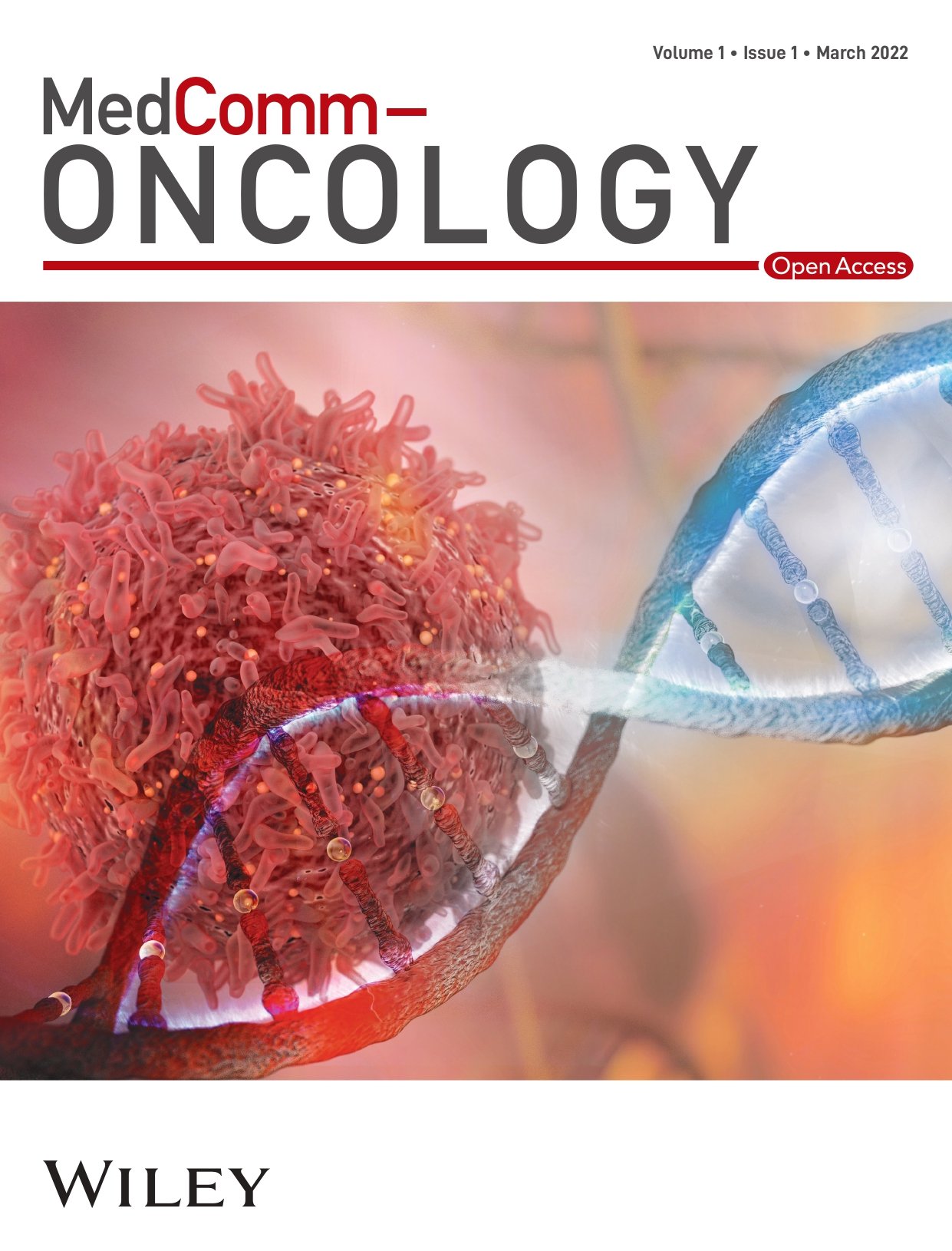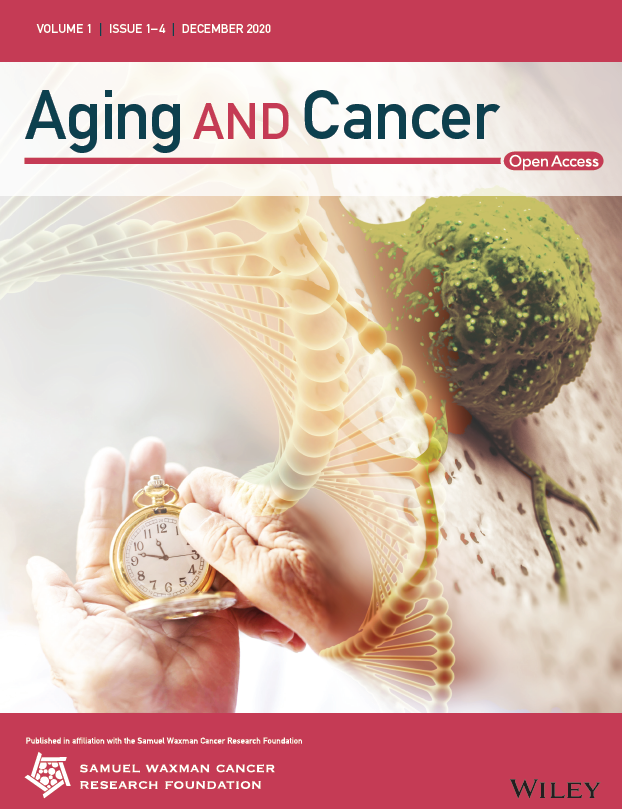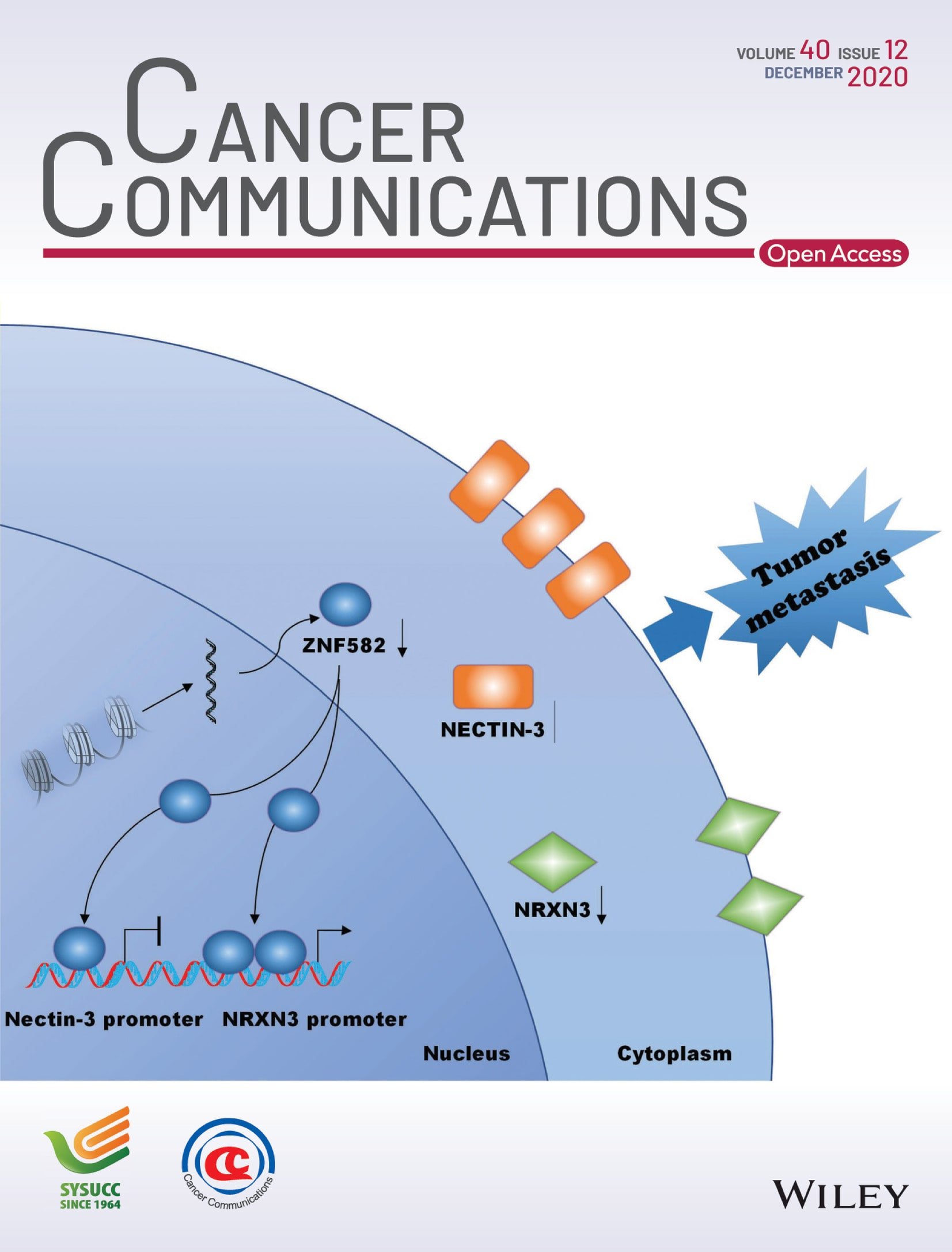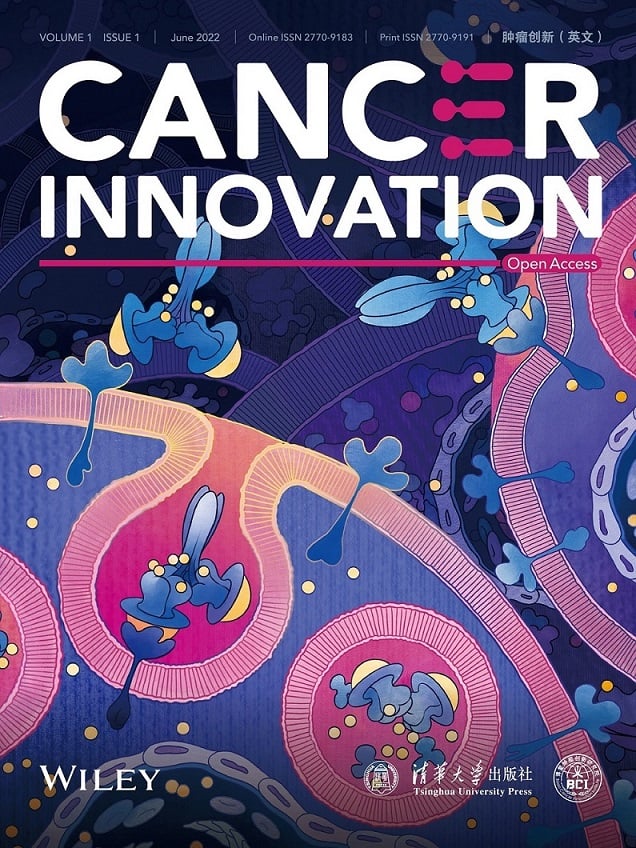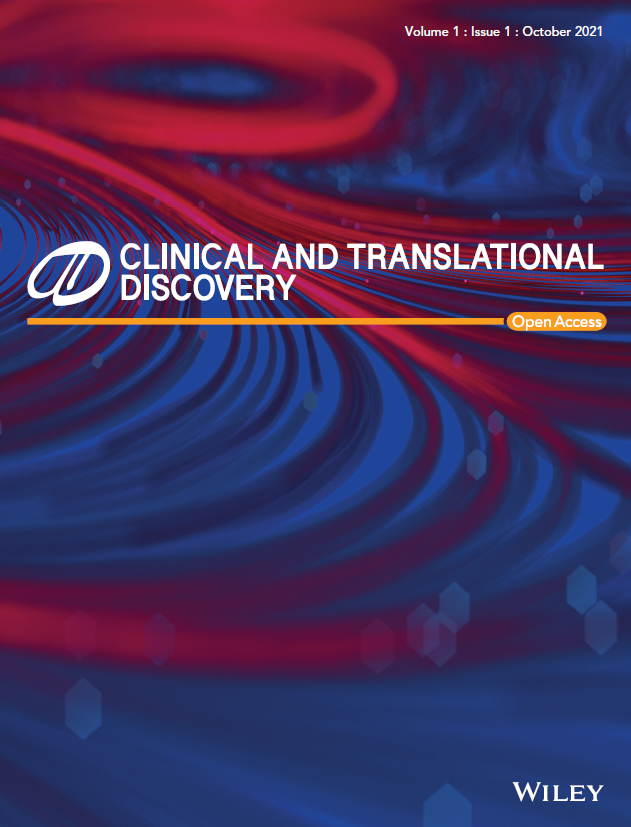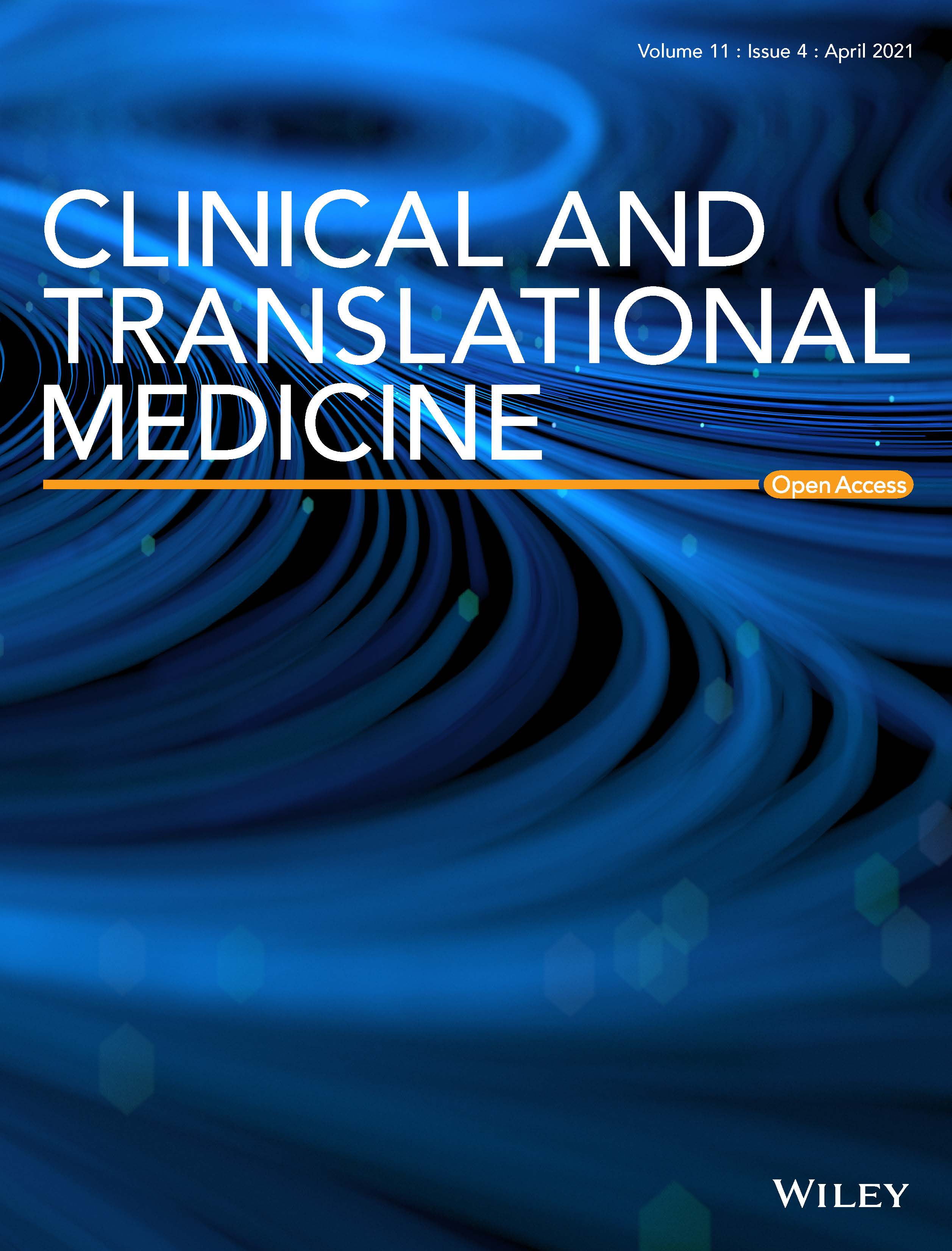Journal list menu
Export Citations
Download PDFs
ISSUE INFORMATION
ORIGINAL ARTICLES
STAT4 facilitates PD-L1 level via IL-12R/JAK2/STAT3 axis and predicts immunotherapy response in breast cancer
- First Published: 15 December 2023
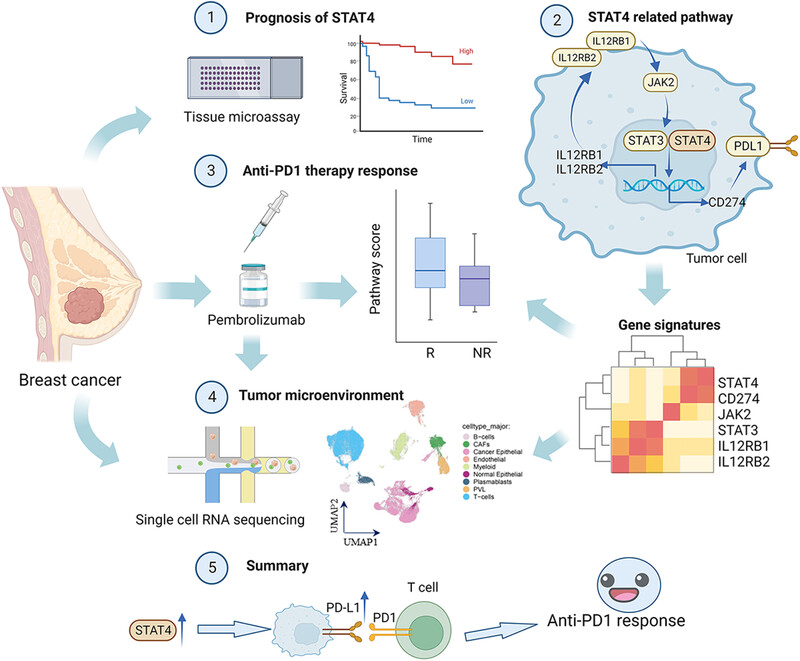
Schematic illustration of the prognostic role and gene function of STAT4 in breast cancer. Analyses of single-cell datasets implies STAT4 is T-cell specific in tumor environment. STAT4 upregulates PD-L1 via STAT4-related pathway: IL-12R/JAK2–STAT3–STAT4/PD-L1, which predicts treatment response in anti-PD1 immunotherapy cohorts.
ATR-dependent ubiquitin-specific protease 20 phosphorylation confers oxaliplatin and ferroptosis resistance
- First Published: 20 December 2023

USP20 is a key factor in the interaction between oxaliplatin (OXA) resistance and ferroptosis in hepatocellular carcinoma. OXA induced DNA damage activates ATR, which phosphorylates USP20 at Ser132 and Ser368. USP20 phosphorylation confers OXA and ferroptosis resistance of HCC cells. Our study reveals a previously unrecognized link between OXA and ferroptosis and provides new insight into mechanisms regarding how DNA damage therapies always lead to therapeutic resistance.
Long-term immune response to Omicron-specific mRNA vaccination in mice, hamsters, and nonhuman primates
- First Published: 15 December 2023

Long-term immune responses to SOmicron-6P were assessed in three animal models. Mice and macaques showed significant decay in antibody titers against BA.1 but remained at high levels around 9 months post-vaccination. Modest neutralizing antibodies against Omicron subvariants were observed in macaques after 9 months. Immunological memory cells can be rapidly reactivated. SOmicron-6P provides durable protection against Omicron challenge in hamsters.
Genome-wide meta-analysis and fine-mapping prioritize potential causal variants and genes related to leprosy
- First Published: 24 November 2023
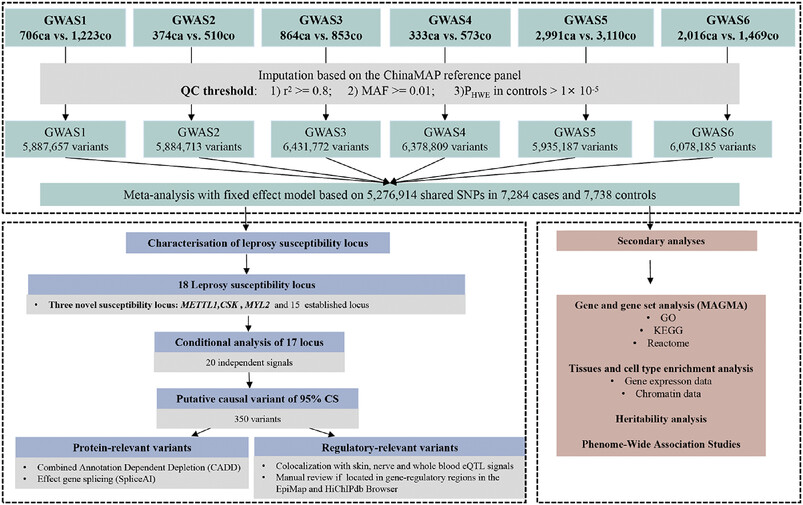
In the present study, three novel risk loci were identified from meta-analysis of six leprosy GWASs (green boxes). Subsequent comprehensive fine-mapping analysis revealed the causal variants were mainly located within the immune-relevant or immune-specific regulatory elements (blue boxes). Further enrichment and pheWAS analyses (brown boxes) expanded our understanding of immune-relevant mechanisms underlying leprosy based on the genetic basis.
Low-dose exercise protects the heart against established myocardial infarction via IGF-1-upregulated CTRP9 in male mice
- First Published: 24 November 2023
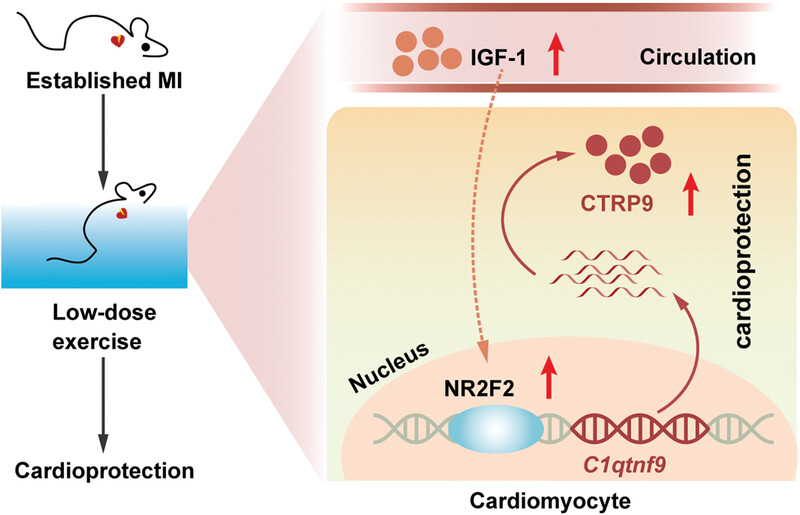
Low-dose exercise exerted cardioprotective effects against established MI in mice. Mechanistically, low-dose exercise upregulated the transcription factor nuclear receptor subfamily 2 group F member 2 (NR2F2) by increasing circulating insulin-like growth factor 1 (IGF-1), therefore, upregulating cardiac C1q complement/tumor necrosis factor-associated protein 9 (CTRP9) expression.
Non-invasive omics analysis delineates molecular changes in water-only fasting and its sex-discriminating features in metabolic syndrome patients
- First Published: 02 November 2023
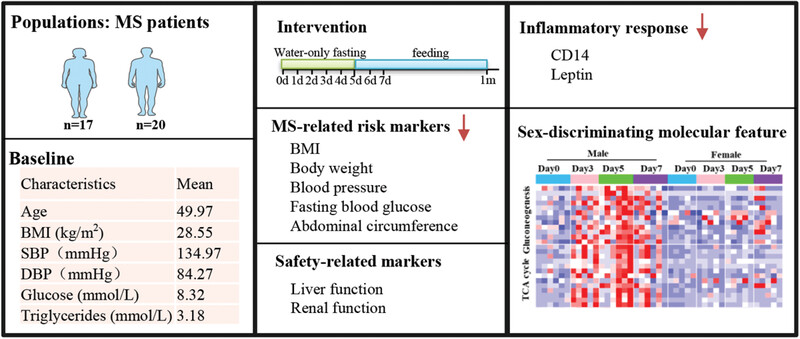
We recruited 37 individuals with metabolic syndrome to engage in a 5-day water-only fasting regimen, and simultaneously captured the molecular alterations through urinary proteomics and metabolomics. The results showed that the inflammatory response was inhibited during the water-only fasting period. Interestingly, glycolysis, tricarboxylic acid cycle, and oxidative phosphorylation underwent a sex-dependent reprogramming throughout the fasting period, whereby males exhibited a greater upregulation of carbohydrate metabolism-related enzymes than females.
A novel Bruton's tyrosine kinase inhibitor JDB175 shows potent efficacy to suppress central nervous system lymphoma
- First Published: 04 November 2023
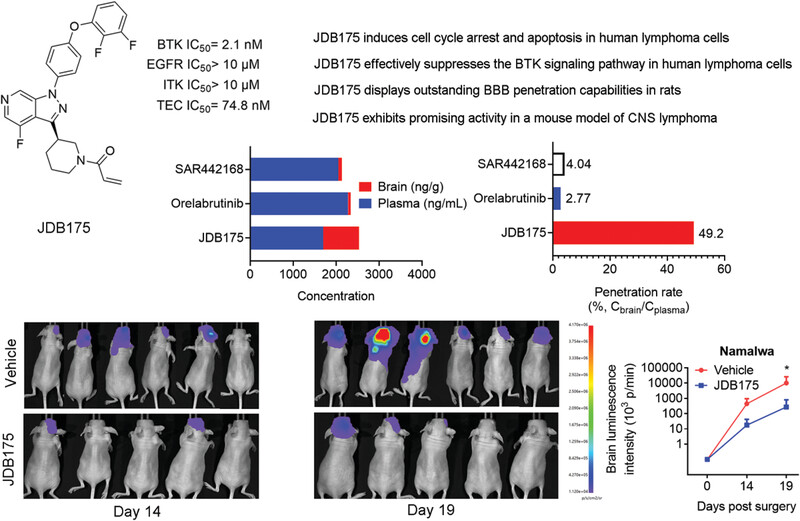
Currently approved Bruton's tyrosine kinase (BTK) inhibitors have limited blood–brain barrier (BBB) permeability, which restricts their efficacy in treating central nervous system (CNS) lymphoma. JDB175, a novel, highly selective, and active BTK inhibitor, demonstrates excellent BBB penetration in rats. It effectively inhibits the BTK signaling pathway in human lymphoma cells, suppressing their proliferation, inducing cell cycle arrest, and promoting apoptosis in vitro. Furthermore, it exhibits promising activity in a mouse model of CNS lymphoma while showing no significant signs of toxicity. Further clinical trials are necessary to investigate its therapeutic efficacy in treating CNS lymphoma.
Methylation of ESR1 promoter induced by SNAI2–DNMT3B complex promotes epithelial–mesenchymal transition and correlates with poor prognosis in ERα-positive breast cancers
- First Published: 24 October 2023
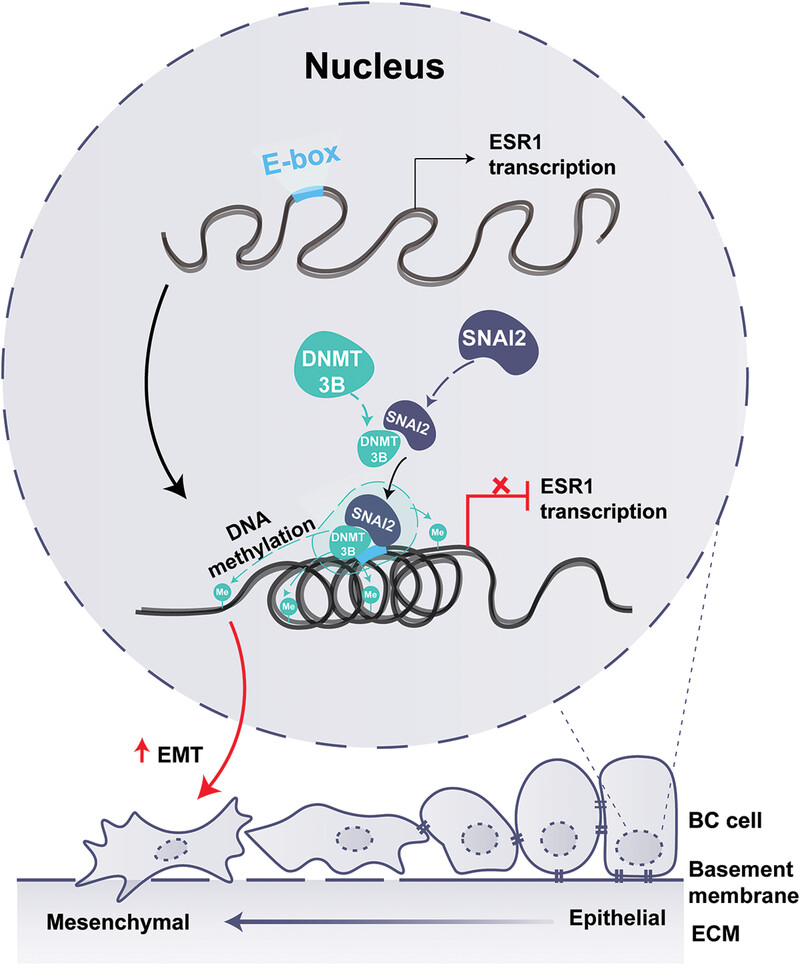
In an ERα-positive BC cell, SNAI2 recruited DNMT3B to form a SNAI2-DNMT3B combination and bound on the E-box region of the ESR1 promoter to stimulate promoter methylation. The elevated ESR1 methylation resulted in a condensed chromatin state, transcriptional repression, and gene silencing of ESR1. Besides, SNAI2-DNMT3B-ESR1 also significantly facilitated the process of epithelial–mesenchymal transition and promoted the invasiveness of ERα-positive BC cells.
Ubiquitin-specific protease 22 promotes tumorigenesis and progression by an FKBP12/mTORC1/autophagy positive feedback loop in hepatocellular carcinoma
- First Published: 01 December 2023
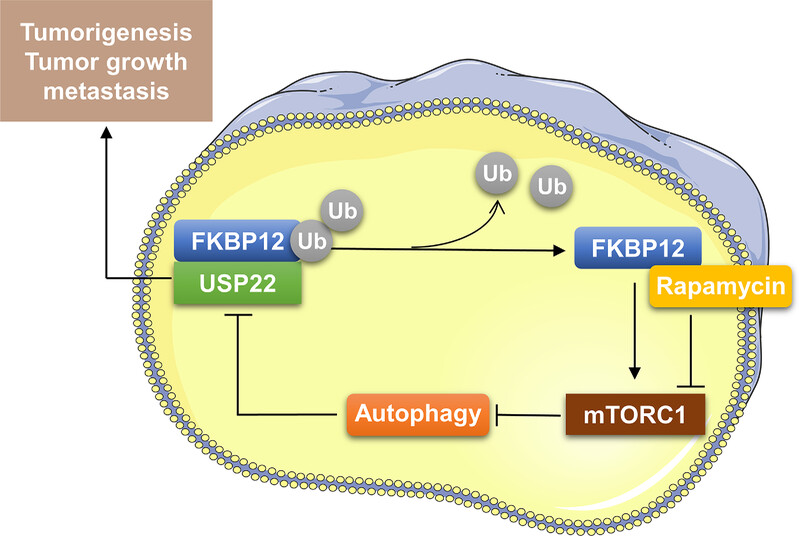
USP22 promoted tumorigenesis and progression by an FKBP12/mTORC1/autophagy positive feedback loop in HCC. USP22 overexpression increased mTORC1 activity and sensitized HCC toward rapamycin. Mechanistically, USP22 interacted with FKBP12 to activate mTORC1 pathway through deubiquitylation. In addition, increased mTORC1 activity further stabilized USP22 by inhibiting autophagic degradation.
Glucagon-like peptide-1 receptor agonist regulates fat browning by altering the gut microbiota and ceramide metabolism
- First Published: 20 November 2023
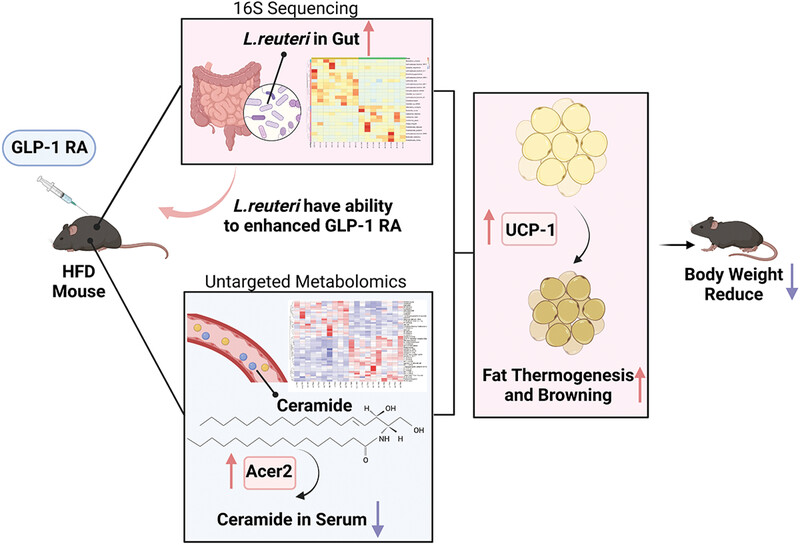
GLP-1 RA can reduce body weight and regulate adipose tissue browning in high-fat diet mice. 16S rRNA and untargeted metabolomics assays suggested that it reshapes the gut microbiome and influences the metabolite ceramide in mice by upregulating Acer2 expression, and L. reuteri was negatively correlated with ceramide. Moreover, L. reuteri can play a therapeutic synergistic role with GLP-1 RA.
Co-targeting FAK and Gli1 inhibits the tumor-associated macrophages-released CCL22-mediated esophageal squamous cell carcinoma malignancy
- First Published: 15 October 2023

TAMs-released CCL22 activates intratumoral CCR4/FAK/AKT axis, which induces the phosphorylation of Gli1 Ser112/Thr115/Ser116 sites, and stimulates Gli1 activity to induce the stemness and metastasis of tumor cells. FAK inhibitor-VS-4718 enhanced the antitumor effect of HH inhibitor-GDC-0449. Our study offers the novel mechanism related to Gli1 activation independent of SMO as well as the rationale for the anti-ESCC combination treatment.
Leucine-rich repeat kinase 2 (LRRK2) inhibition upregulates microtubule-associated protein 1B to ameliorate lysosomal dysfunction and parkinsonism
- First Published: 20 November 2023

Graphical Abstract: FL090 is a novel small-molecule LRRK2 kinase inhibitor. FL090 reduces the level of phosphorylation of LRRK2, increases MAP1B expression, and prevents lysosomal defects in PD. Consequently, FL090 prevents dopaminergic neuronal damage and motor dysfunction in PD mice models. This action is through the elevation of MAP1B, as overexpression or pharmacological activation of MAP1B ameliorates PD toxicities.
Single-cell transcriptomic atlas of distinct early immune responses induced by SARS-CoV-2 Proto or its variants in rhesus monkey
- First Published: 20 November 2023
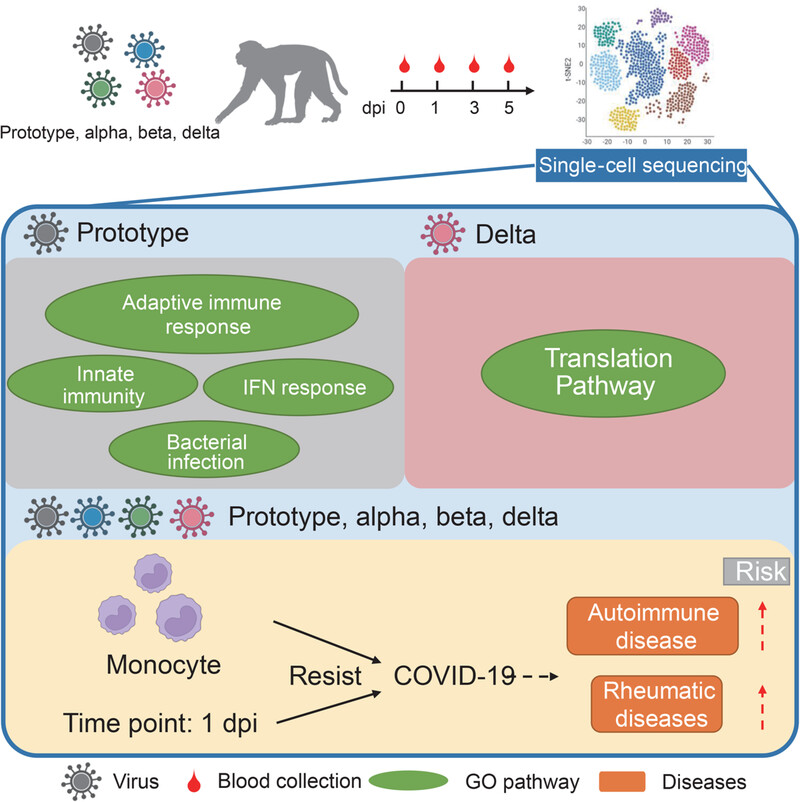
Infection of SARS-CoV-2 (Prototype, Alpha, Beta, Delta) induced dramatic immune response in peripheral blood mononuclear cells (PBMCs). Prototype caused stronger immune response and IFN response. And the Delta strain has more effect on the translation pathway. Four strains caused monocytes as major responder of the PBMCs the on 1 day postinfection, and increased risk of autoimmune disease and rheumatic diseases.
Integrated transcriptomics, proteomics, and functional analysis to characterize the tissue-specific small extracellular vesicle network of breast cancer
- First Published: 03 December 2023

BC-specific sEV network was characterized by enriched cell adhesion and immunomodulatory molecules, in which the contribution of CAFs was highlighted. BC tissue-derived sEVs presented a stronger immunostimulatory function than in vitro models. Moreover, some noncancer cell-derived sEV biomarkers in circulation have great diagnostic potential.
BDH1-mediated LRRC31 regulation dependent on histone lysine β-hydroxybutyrylation to promote lung adenocarcinoma progression
- First Published: 13 December 2023
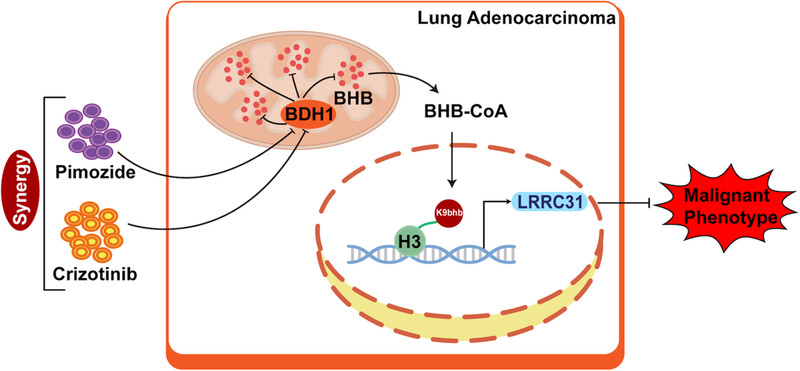
BDH1 promotes LUAD development by regulating LRRC31 through H3K9bhb. Pimozide and crizotinib targeting BDH1 can synergistically inhibit the proliferation of LUAD. This paper reveals a novel epigenetic regulatory pathway of BDH1 that regulates the malignant phenotype of LUAD, providing a new insight to treat LUAD.
A potent and broad-spectrum neutralizing nanobody for SARS-CoV-2 viruses, including all major Omicron strains
- First Published: 26 October 2023
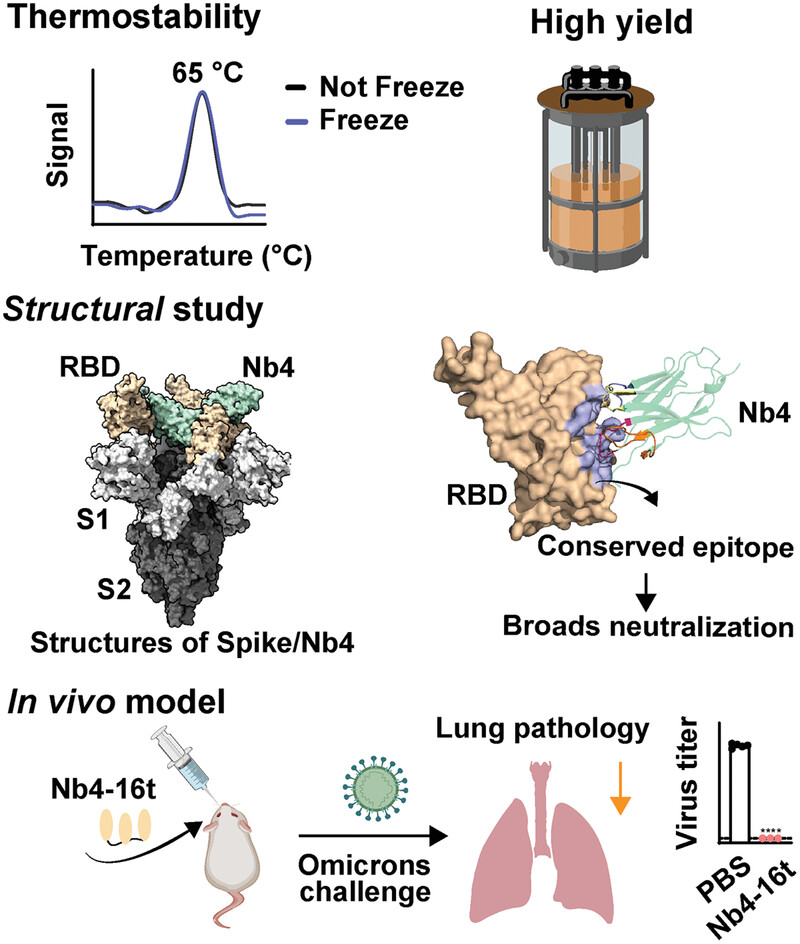
The leading nanobody (Nb), namely, Nb4, with excellent physicochemical properties, can neutralize Delta and Omicron subtypes including the major Omicrons, and is expected to be effective for neutralizing most recent Omicron variants, including BF.7, BQ1.1, and XBB1.5. The crystal and Cryo-EM structure uncover an epitope, which is evolutionarily conserved among Omicrons. Prophylactic and therapeutic experiments in mice indicated that Nb4 could reduce the Omicron virus loads in the lung. In particular, in prophylactic experiments, intranasal administration of multivalent Nb4 (Nb4-16t) completely protected mice from Omicron infection.
Long-term complete remission and peripheral biomarkers in Hodgkin lymphoma patients after decitabine-plus-camrelizumab epi-immunotherapy and treatment cessation
- First Published: 22 November 2023

Patients with relapsed/refractory cHL who achieved CR with decitabine-plus-camrelizumab therapy were included, they had consolidation therapy (per 3–4 or 6–12 weeks), and those having 1-year of continuous CR could discontinue treatment. The clinical benefits and serum biomarkers were investigated. Patients acquired satisfactory relapse-free survival after decitabine-plus-camrelizumab cessation, especially low-risk patients who had lower pretreatment serum levels of IL-6 and LDH.
A multicenter single-arm trial of neoadjuvant pyrotinib and trastuzumab plus chemotherapy for HER2-positive breast cancer
- First Published: 07 December 2023
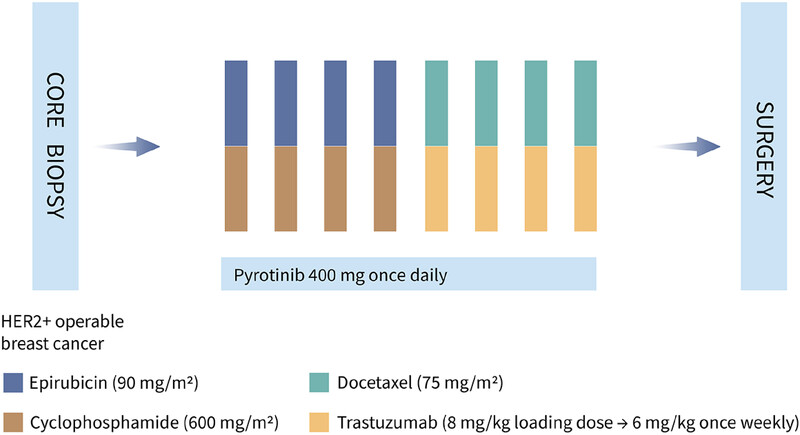
In this multicenter, single-arm trial, we investigated the efficacy and safety of the ECPy-THPy regimen (epirubicin, cyclophosphamide, and pyrotinib followed by docetaxel, trastuzumab, and pyrotinib) as neoadjuvant therapy for patients with stage II–III HER2-positive breast cancer. Our results revealed that tpCR was achieved in 107 (68.6%) out of 156 patients, which was in line with our previous pilot study and numerically higher than the tpCR rate in previous phase III KRISTINE trial and the phase III POENY trial.
Nrf2/PHB2 alleviates mitochondrial damage and protects against Staphylococcus aureus-induced acute lung injury
- First Published: 07 December 2023
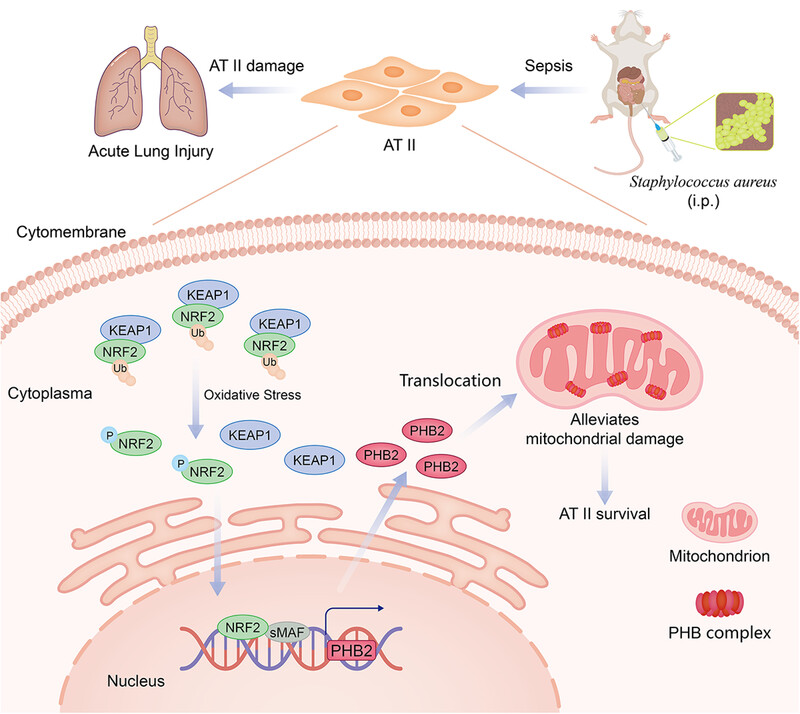
In this study, the authors investigated that activation of the Nrf2/PHB2 pathway in alveolar epithelial type II cells (AT II) can alleviate mitochondrial damage caused by Staphylococcus aureus-induced sepsis in mice, thereby promoting the survival of AT II and preventing progression to acute lung injury. Nrf2 plays a key role in the mitochondrial retention of PHB2, and its nuclear translocation can increase the expression of PHB2 to prevents mitochondrial dysfunction .
NLRP3/IL-1β induced myeloid-derived suppressor cells recruitment and PD-L1 upregulation promotes oxaliplatin resistance of hepatocellular carcinoma
- First Published: 19 December 2023
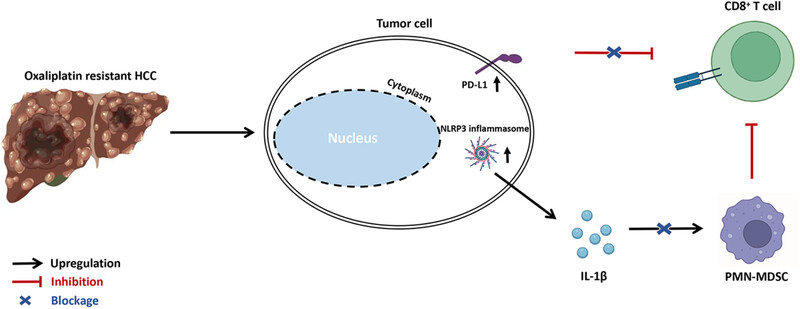
The study shows that NLRP3 is upregulated in oxaliplatin-resistant HCC cells and has a tumor-intrinsic function in generating an immunosuppressive hepatocellular carcinoma environment by activating IL-1β and PD-L1 upregulation. The combination with PD-L1 and IL-1β blockades could represent a promising antitumor strategy for oxaliplatin-resistant HCC .
Identification of RP11-770J1.4 as immune-related lncRNA regulating the CTXN1–cGAS–STING axis in histologically lower-grade glioma
- First Published: 19 December 2023
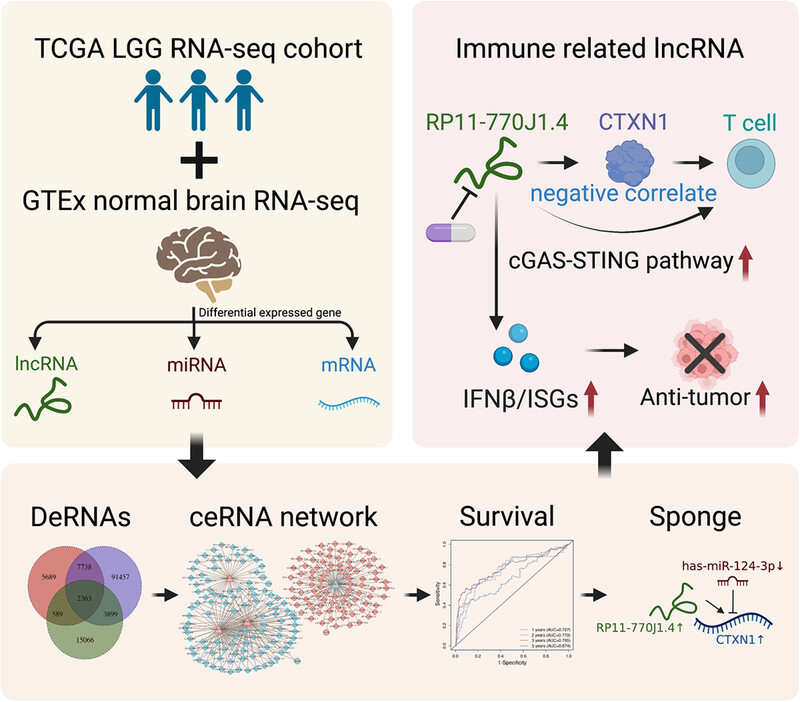
A comprehensive analysis of the expression profiles of RNAs in histologically lower-grade glioma (LGG) was performed to reveal the influence of immune-related signatures on glioma biology. Survival analysis established the close correlation between network features and glioma prognosis. Of which, RP11-770J1.4 as a regulator of CTXN1 expression by sponging hsa-miR-124-3p. Downregulated RP11-770J1.4 resulted in increased spontaneous gene expression of the cGAS–STING pathway. Ctxn1 knockdown in GL261 cells led to decreased tumor weight and prolonged survival time while increasing tumor CD8+ T cells infiltration. These findings uncover the RP11-770J1.4–CTXN1 as a novel immune regulatory axis in gliomas.
A cell-penetrating peptide exerts therapeutic effects against ischemic stroke by mediating the lysosomal degradation of sirtuin 5
- First Published: 13 December 2023
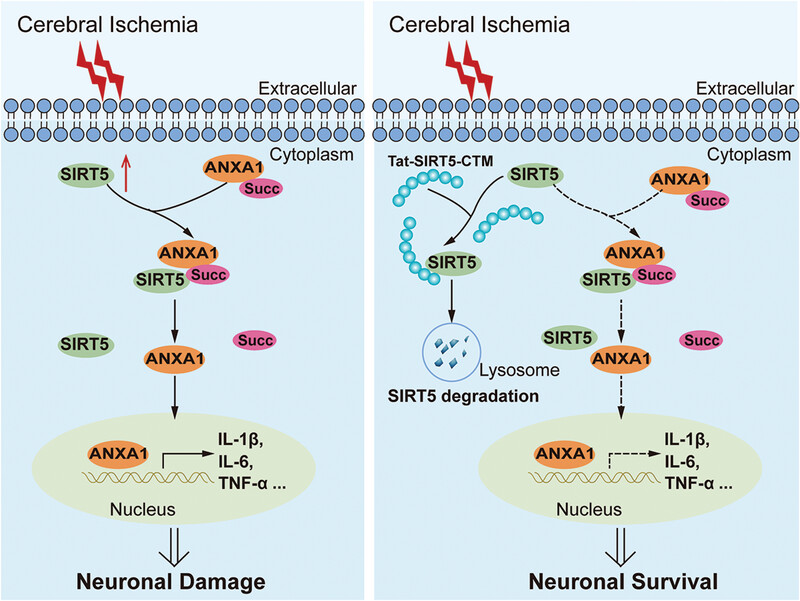
Xia et al. synthesize a cell-penetrating peptide Tat-SIRT5-CTM and reveal that this peptide specifically blocked the interaction of SIRT5 with ANXA1, led to SIRT5 degradation and thereby inhibiting SIRT5-mediated desuccinylation of ANXA1, which, in turn, alleviated microglia-induced neuroinflammation, and eventually protected neurons against ischemic stroke. Thus, the fusion peptide Tat-SIRT5-CTM may be a promising therapeutic candidate for the treatment of ischemic stroke.
Urolithin A protects severe acute pancreatitis-associated acute cardiac injury by regulating mitochondrial fatty acid oxidative metabolism in cardiomyocytes
- First Published: 19 December 2023
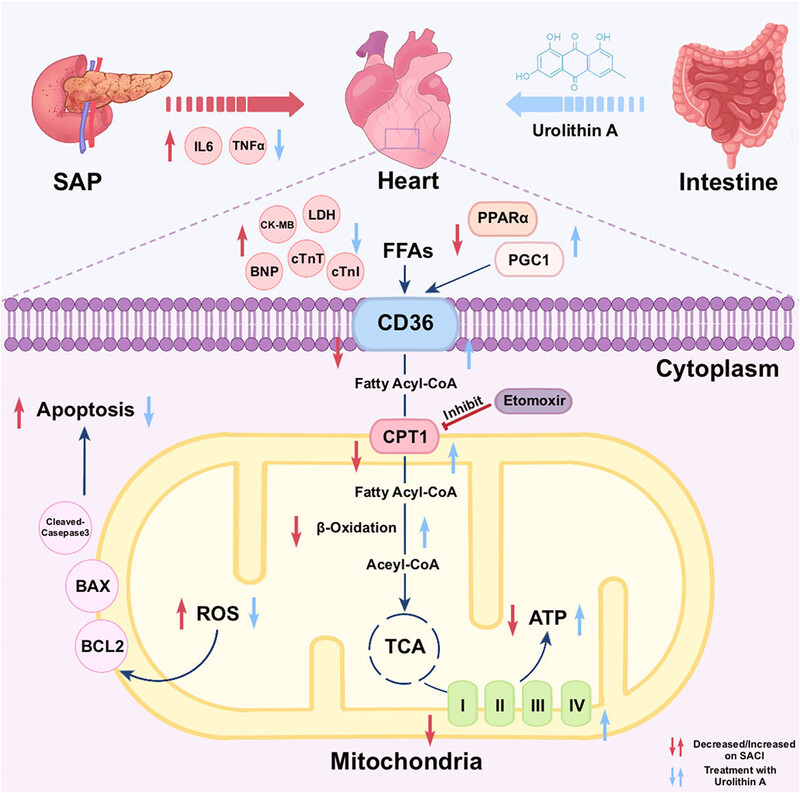
Potential mechanisms underlying the role of Urolithin A in improving inflammatory injury and mitochondrial dysfunction in SACI. UA regulates CD36 and CPT1 to balance mitochondrial fatty acid oxidative metabolism and attenuate mitochondrial dysfunction through activation of the PPARα/PGC1 signaling pathway, as well as reduces apoptosis and ultimately attenuates myocardial inflammatory damage.
REVIEWS
Epigenetic regulation in lung cancer
- First Published: 26 October 2023
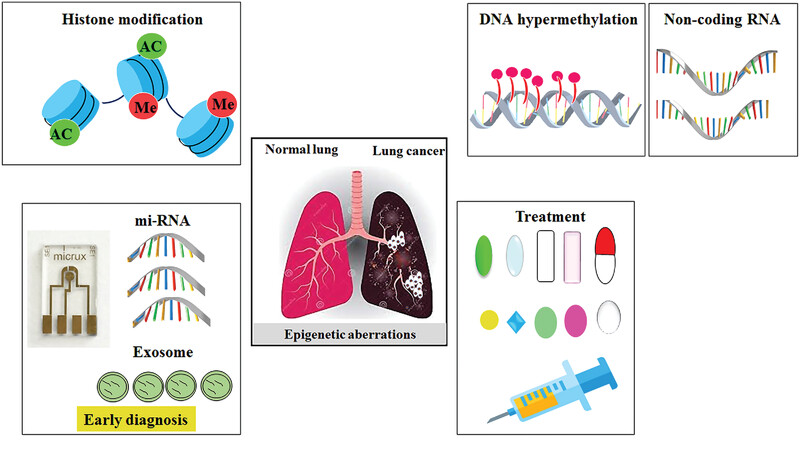
Role of epigenetics in lung cancer. Epigenetics is considered the main cause of lung cancer. Epigenetics is categorized into three phenomena: histone modification, DNA methylation, and noncoding RNAs. One of the main approaches to controlling lung cancer is early diagnosis. Micro-RNAs and exosomes are considered reliable biomarkers to predict lung cancer at very early stages and are proposed to be considered for screening the target population.
Mechanisms and therapeutic strategies of extracellular vesicles in cardiovascular diseases
- First Published: 20 December 2023
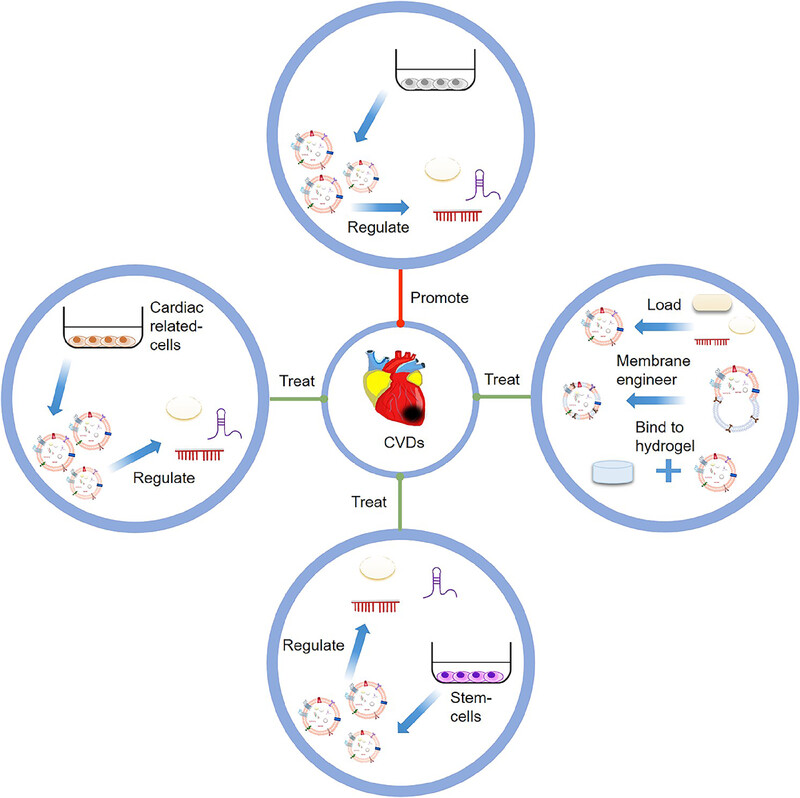
Extracellular vesicles (EVs) have many potential applications in the study of cardiovascular pathophysiology. This article reviews the role of EVs in the pathogenesis and diagnosis of cardiovascular diseases (CVDs) in cardiovascular system. In addition, the mechanism and therapeutic methods of EVs promoting CVDs repair were summarized.
Targeted therapies in bladder cancer: signaling pathways, applications, and challenges
- First Published: 15 December 2023
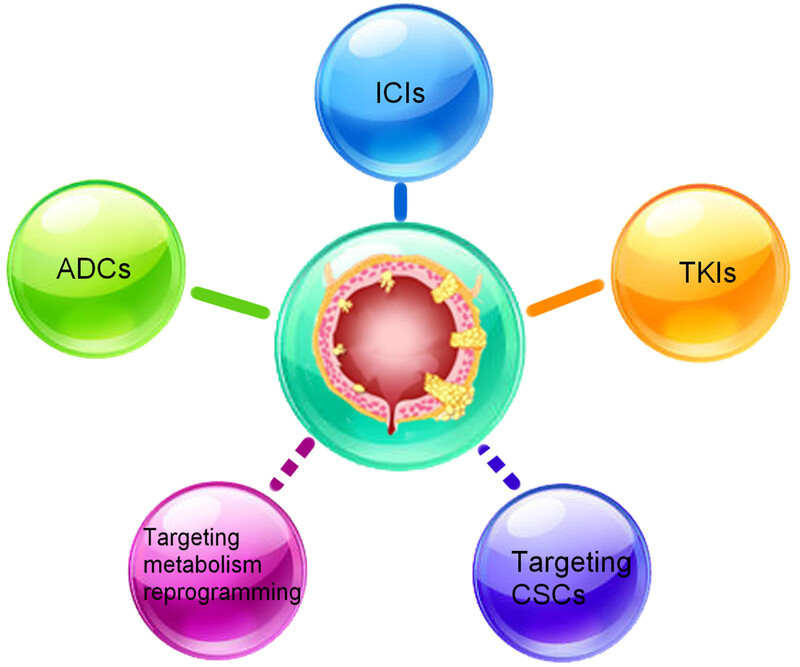
Advances in understanding molecular characteristics of bladder cancer have prompted its therapeutic breakthroughs. Newly approved targeted drugs including immune checkpoint inhibitors (ICIs), antibody–drug conjugates (ADCs), and tyrosine kinase inhibitor (TKI) have greatly improved the survival outcomes of advanced patients. Furthermore, targeting metabolism reprogramming and cancer stem cells (CSCs) are full of revolutionary potential.
Potential therapies targeting nuclear metabolic regulation in cancer
- First Published: 29 November 2023

1. Cell metabolism and gene control are significantly integrated and regulated by one another.
2. There is a positive feedback loop of metabolism-epigenetics-gene regulation which control cancer progression.
3. The discovery of metabolic enzymes and their functions in the nucleus will provide more insights into cancer therapy.
Chimeric antigen receptor natural killer cells: a promising antitumor immunotherapy
- First Published: 01 December 2023
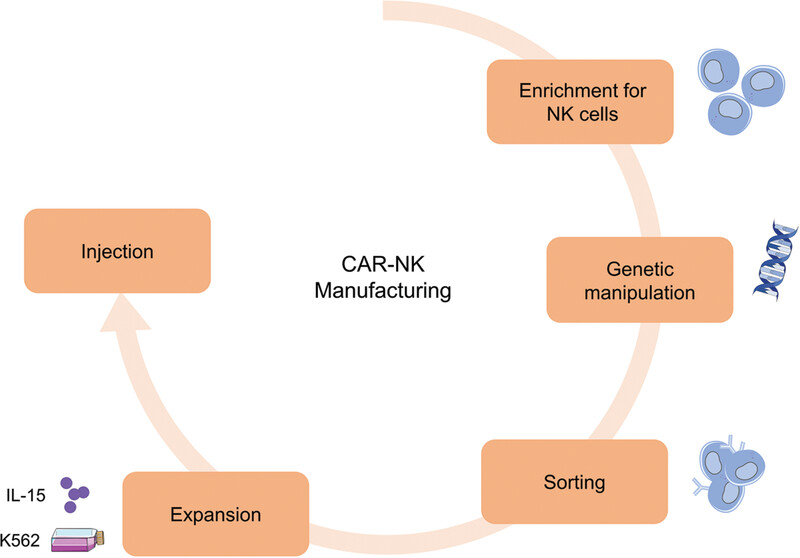
NK cells for CAR NK generation can be derived from several sources, including PBMC, iPSC, UCB, and NK-92 cells. NK cells are transduced with CAR structure by viral or nonviral vectors after isolation or differentiation from a variety of sources, then CAR-NK cells can be sorted. CAR NK cells are then cocultured with cytokines or feeder cells expressing IL-15 and mb-IL-21 to allow further expansion of NK cells. This review will discuss the advances of CAR NK cells, the design improvement of CAR, CAR NK cell manufacture, the challenges, and the clinical outcomes in CAR NK cell therapy.
Systemic allergic contact dermatitis to palladium, platinum, and titanium: mechanisms, clinical manifestations, prevalence, and therapeutic approaches
- First Published: 21 October 2023
Epicardial adipose tissue, metabolic disorders, and cardiovascular diseases: recent advances classified by research methodologies
- First Published: 24 October 2023
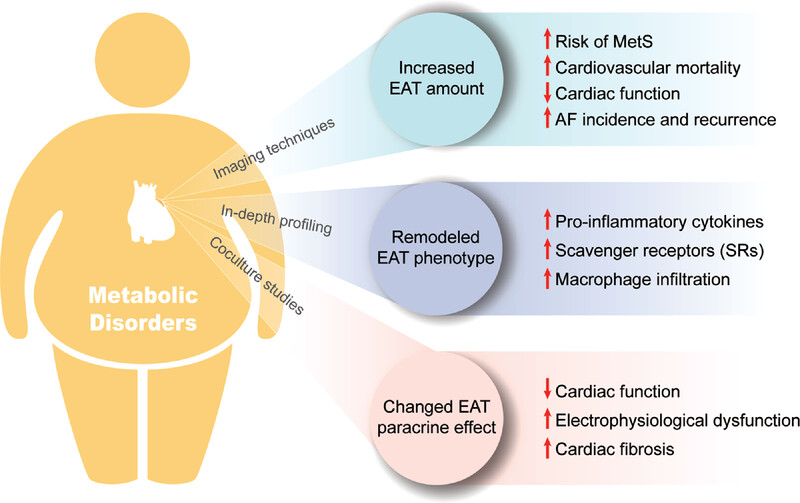
Considering the advances in research and biological technology, our understanding of EAT has undergone a continuous deepening process, from volumetric measurement to in-depth profiling of EAT, and from correlational to cause–effect studies. EAT amount measured by imaging techniques is significantly higher in patients with metabolic disorders. An increased EAT volume is associated with a higher risk of developing metabolic syndrome, cardiovascular mortality, atrial fibrillation (AF) incidence, and reduced cardiac function. Further, in-depth profiling studies suggest that EAT is remodeled into a more proinflammatory phenotype in patients with metabolic disorders. The levels of proinflammatory cytokines such as IL-1, IL-6, TNF-α, and interferon-gamma in EAT under conditions of metabolic disease are significantly higher than those in the control group. Additionally, the expression of scavenger receptors (SRs) and macrophage infiltration are at higher levels. Finally, coculture studies explored the paracrine effect of EAT. Studies found that the secretory profile of EAT form patients with metabolic disorders is distinct from the control group. Moreover, in vitro coculture studies, in which cardiomyocytes were cultured with secretory products of EAT biopsies from patients, have shown that secretory products of EAT from patients with metabolic disorders exhibited detrimental effects on cardiomyocytes, such as impairing the contractile function of cardiomyocytes. Furthermore, coculture of the cardiomyocytes with secretory products of EAT from AF patients resulted in changes in cardiomyocyte electrophysiology and increased cardiac fibrosis, which are related to the mechanisms underlying AF.
The emerging role of exosomes in communication between the periphery and the central nervous system
- First Published: 30 October 2023
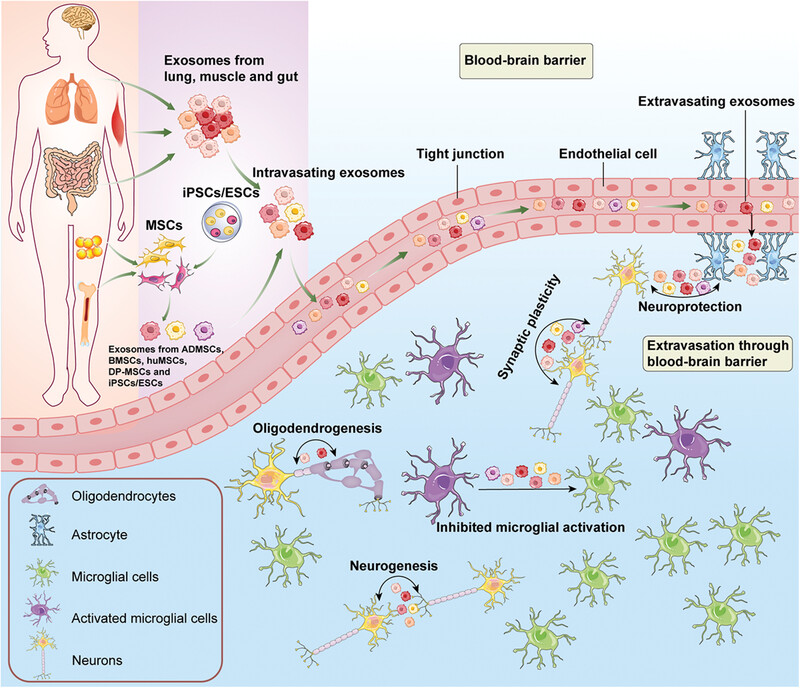
1. Exosomes can pass through the blood—brain barrier (BBB) and act as a vital factor in the exchange of information between the periphery and central nervous system (CNS).
2. This review summarizes the role of peripheral exosomes deriving from tissues like the lung, gut, skeletal muscle, and various stem cell types, in communicating with the CNS and influencing the brain's function.
3. Exosomes have the potential to be used for therapeutic purposes, and new strategies for taking advantage of them are being developed.
Oncofetal reprogramming in tumor development and progression: novel insights into cancer therapy
- First Published: 02 December 2023
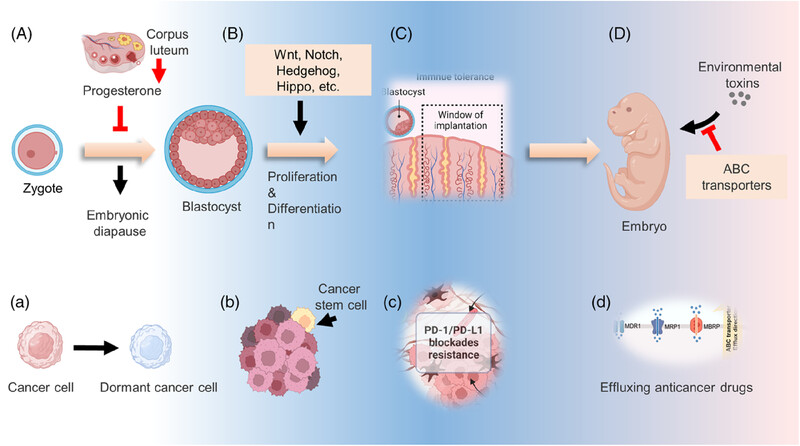
Various regulatory mechanisms are involved in the development of a fertilized egg into an embryo to ensure that it proceeds normally. Meanwhile, cancer cells also exhibit several embryo-like characteristics that enhance multidrug resistance. (A) The level of corpus-secreted progesterone can be mediated by the inner or outer environment and lead to embryonic diapause. (a) Cancer cells are able to transition to a dormant state after treatment. (B) Wnt, Notch, Hedgehog, and Hippo signaling pathways contribute to development by driving the proliferation and differentiation of embryonic cells. (b) Cancer stem cells are considered drug-resistant cells associated with some embryonic developmental signaling pathways. (C) Preimplantation embryo was reported to drive the formation of immunosuppressive microenvironment to evade attack from maternal immune system. (c) The immune microenvironment components of cancer cells can confer resistance to immune checkpoint blockades (ICBs). (D) To export environmental toxins and provide a favorable condition for development, ABC transporters are usually overexpressed in the blood–embryo barrier. (d) ABC transporter overexpression in cancer cells results in the development of multidrug resistance.
Probiotics, prebiotics, and postbiotics in health and disease
- First Published: 04 November 2023
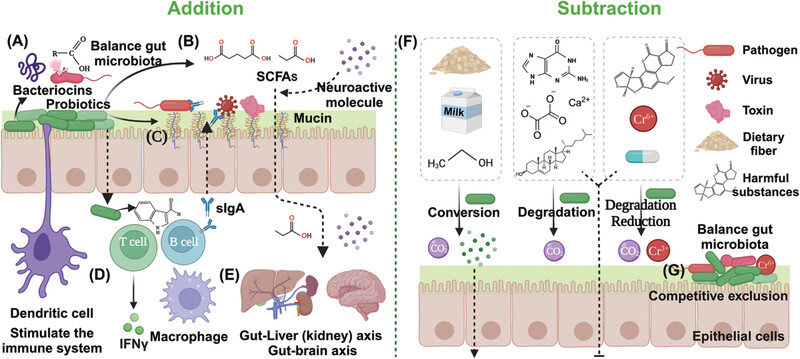
Extensive research and clinical evidence have demonstrated the mechanisms and effectiveness of probiotics, prebiotics, and postbiotics in restoring gut microbiota homeostasis and treating a variety of diseases. Prebiotics can promote the growth of beneficial intestinal bacteria, while probiotics produce postbiotics through “addition” to regulate the gut microbiota, and “subtraction” to remove harmful metabolites and exogenous substances to reduce their impact on the body, thereby alleviating or treating diseases. Probiotics, prebiotics, and postbiotics may represent the next generation of medicines, with the potential to revolutionize the way we treat and manage disease.
Blood-derived product therapies for SARS-CoV-2 infection and long COVID
- First Published: 15 November 2023
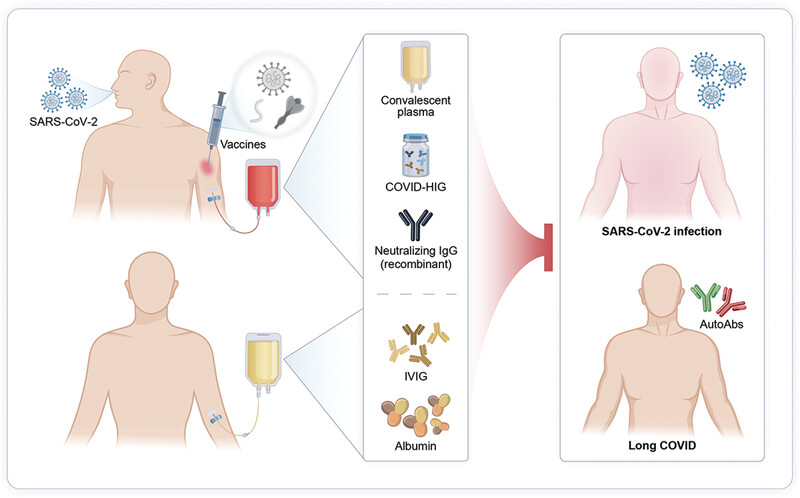
The development and application of blood-derived product therapeutics are essential in mitigating the considerable damage caused by SARS-CoV-2 infection and long COVID. Various blood-derived products, including COVID-19 convalescent plasma, COVID-19 hyperimmune globulin, recombinant anti-SARS-CoV-2 neutralizing immunoglobulin G, intravenous immunoglobulin (IVIG), and albumin, are investigated for their potential use in therapeutic applications. Furthermore, the insights acquired from the administration of blood-derived products during the ongoing COVID-19 pandemic can serve as a reference for treating other potentially acute infectious diseases.
Microbiota in cancer: molecular mechanisms and therapeutic interventions
- First Published: 05 November 2023
The pathogenesis and potential therapeutic targets in sepsis
- First Published: 20 November 2023
Cyclical endometrial repair and regeneration: Molecular mechanisms, diseases, and therapeutic interventions
- First Published: 01 December 2023

This image summarizes diseases and therapeutic interventions for cyclic endometrial repair and regeneration. We summarize endometrial repair at different menstrual phases and the external factors contributing to endometrial repair imbalances. Current research advances in endometrial repair are outlined. Examples include hormone therapy, stem cell therapy, and so on.
Receptor tyrosine kinases: biological functions and anticancer targeted therapy
- First Published: 07 December 2023
Decellularized diseased tissues: current state-of-the-art and future directions
- First Published: 20 November 2023
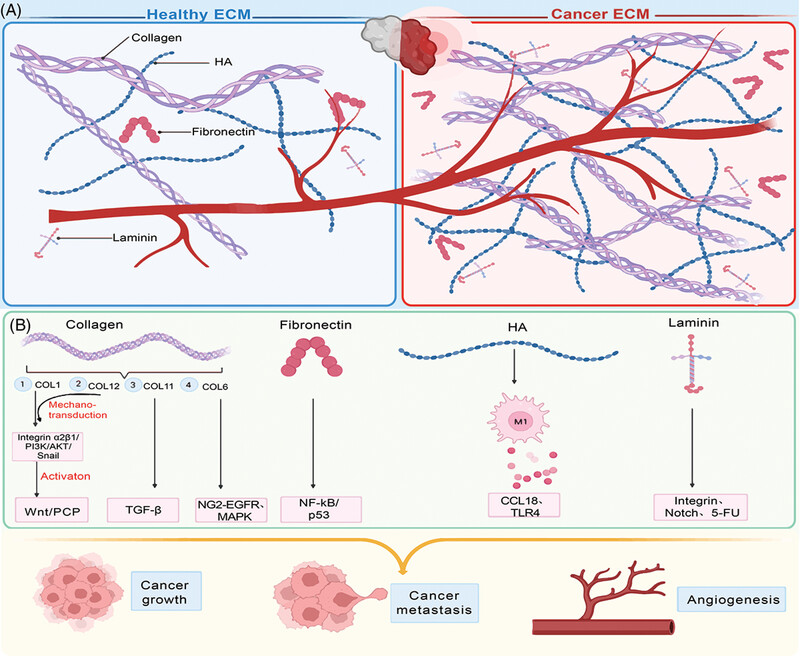
ECM from cancers (exhibited in the right panel) is different from healthy ECM (exhibited in theleft panel). Vast ECM proteins (e.g., collagens, fibronectin, HA, laminin) deposit in large quantities in the cancer ECM. The signaling pathways have been activated by the pathologic ECM deposition, related in the processes of cancergrowth, cancer metastasis and angiogenesis to facilitate cancer development.
Progress in cancer neuroscience
- First Published: 22 November 2023
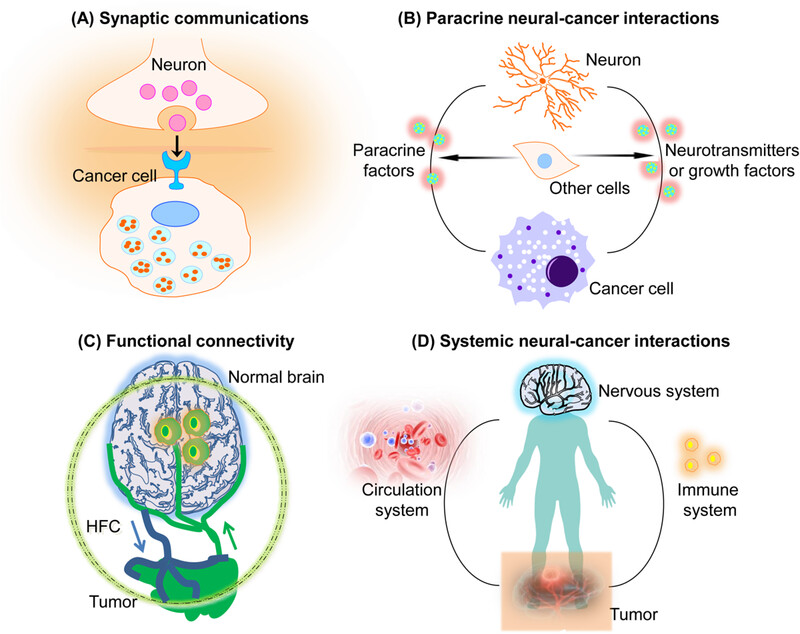
Neurons and cancer cells’ synaptic communication can modulate cancer growth via neurotransmitters and voltage-mediated mechanisms. Besides, paracrine signaling between cancer and nerve cells, for instance, the neuron-mediated secretion of growth factors or neurotransmitters, modulates cancer growth in various tissues. The neuronal influence on malignant cells might be direct or affect other cells in TME. Cancer-induced paracrine factors modulate nervous system to enhance neural activity in TME. Furthermore, cancers functionally control neural networks, and aberrant neural circuits stimulate tumor progression. Circulating factors released from cancer effects nervous system activity, whereas nervous system influences cancer growth by circulating molecules (hormones and progenitor cells) and alters immune system function.
Biomarkers and experimental models for cancer immunology investigation
- First Published: 02 December 2023
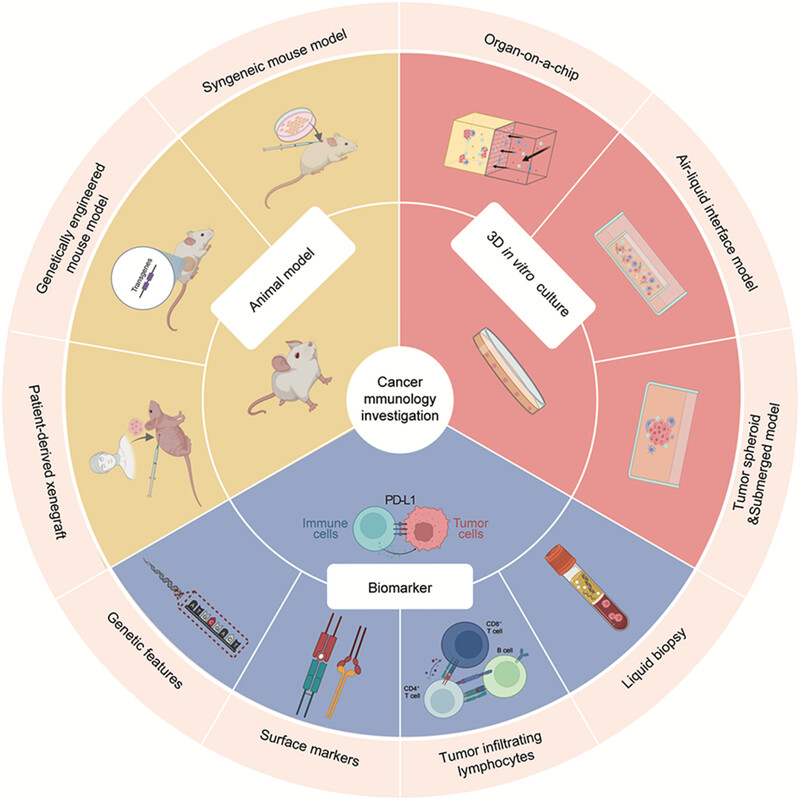
The rapid progress in tumor immunotherapies poses challenges for cancer immunology research tools, particularly in terms of the need for high-efficacy biomarkers and the limited reproducibility of experimental models. Biomarkers currently used in research can be categorized into surface protein markers, genetic features, tumor-infiltrating lymphocytes, and liquid biopsy biomarkers. Experimental models, such as 3D in vitro cultures and animal models, have emerged as valuable platforms for biomarker research and cancer immunology investigations. 3D in vitro cultures, including spheroid models, submerged models, air–liquid interface models, and organ-on-a-chip systems, offer the ability to replicate tumor-immune interactions by preserving native immune components or through coculturing with immune cells. Animal models, including syngeneic models, genetically engineered models, and patient-derived xenografts, offer opportunities to study tumor-immune interactions in an in vivo setting. Furthermore, humanized animal models provide a means to simulate the human-specific tumor microenvironment, enabling a more accurate representation of the complex immune responses observed in patients. In summary, the development of high-efficacy biomarkers and the utilization of advanced experimental models, such as 3D in vitro cultures and animal models, offer promising avenues for studying tumor immunology and advancing cancer immunotherapies.
O-GlcNAcylation: cellular physiology and therapeutic target for human diseases
- First Published: 19 December 2023
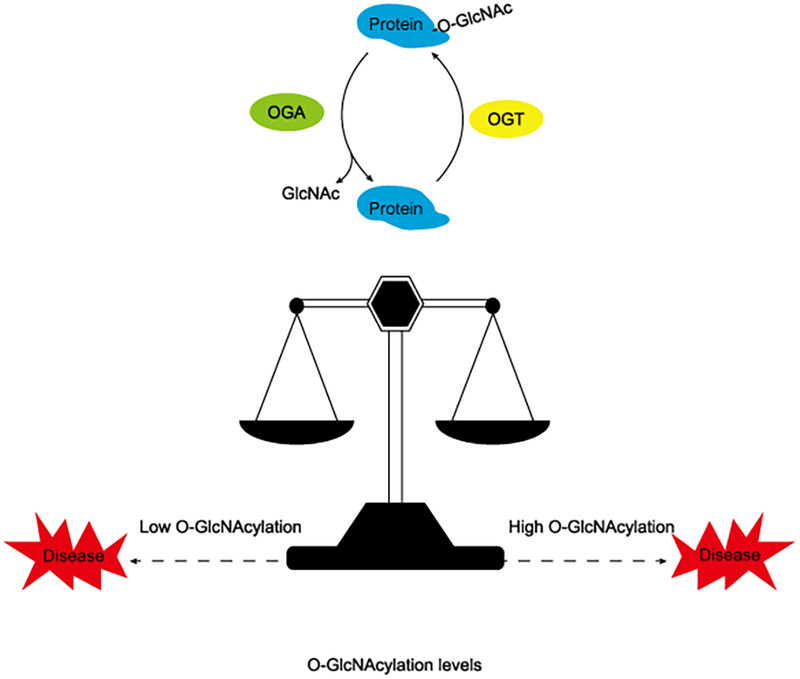
The levels of O-GlcNAcylation must be maintained within a certain “optimal zone” to preserve normal cellular function. Under stimuli or abnormal nutrient intake, the levels of O-GlcNAcylation in cells might be disrupted due to the mutual regulation between OGT and OGA, leading to the loss of O-GlcNAc homeostasis, which is a significant factor in the pathogenesis of various human diseases.
Chinese expert consensus on the diagnosis and treatment of coronary microvascular diseases (2023 Edition)
- First Published: 19 December 2023
Role of the immune system in liver transplantation and its implications for therapeutic interventions
- First Published: 13 December 2023
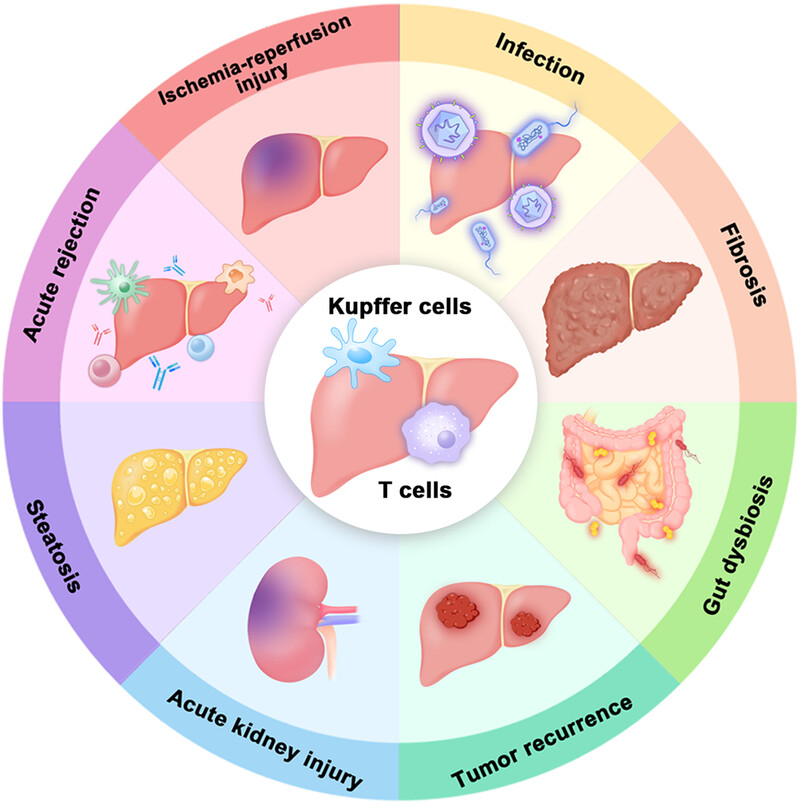
The liver is rich in immune cells, including innate immune cells and adaptive immune cells, which constitute the immune microenvironment. The immune microenvironment of liver may change in the ischemia–reperfusion stage and the acute rejection stage after liver transplantation and cause complications. In this process, Kupffer cells as the main innate immune cells and T cells as the main adaptive immune cells participate in the reaction.
HIGHLIGHTS
A comprehensive model for tRNA methylation modification studies
- First Published: 21 October 2023
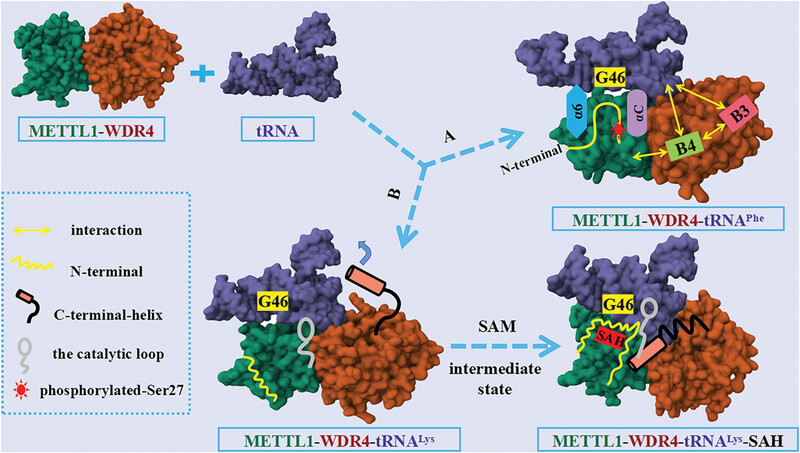
The molecular mechanism of N7-methylguanosine (m7G)-tRNA modification mediated by the methyltransferase like 1-WD repeat domain 4 (METTL1–WDR4). Route A indicated that with WDR4 as the scaffold, METTL1 catalyzed G46 methylation modification after binding of the tRNA variable loop via its αC and α6 helices, as reported by Richard I. Gregory's group. Route B showed the METTL1–WDR4-mediated tRNA methylation modification model and the effect of binding of the S-adenosylmethionine on the N-terminus of METTL1, as reported by Yunsun Nam's group.
New discoveries on how DICER efficiently processes pre-miRNA
- First Published: 29 November 2023
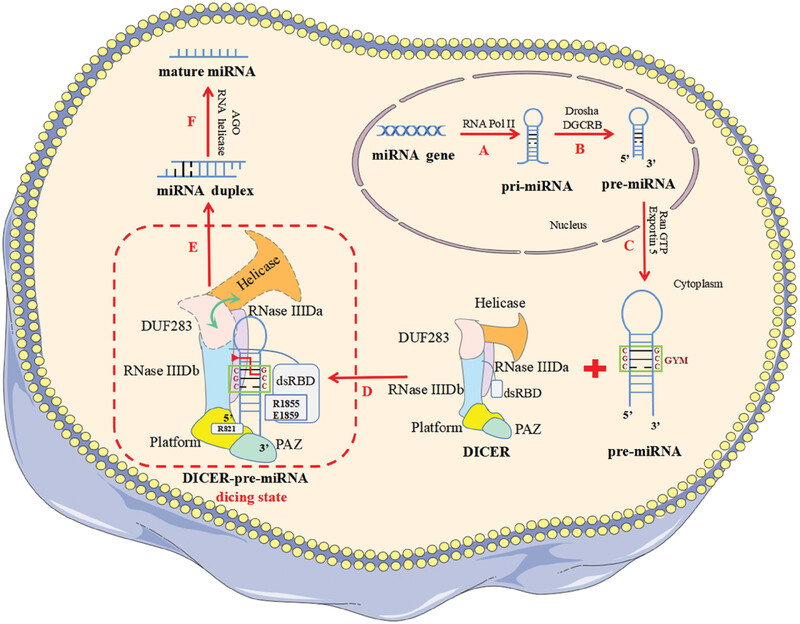
The latest study identified the “GYM motif” on precursor microRNA (pre-miRNA) for the first time and highlighted its key role in DICER specifically recognizing and efficiently cleaving pre-miRNA to produce miRNA. In addition, the dicing state of DICER efficiently processing pre-miRNA was revealed, which was previously difficult to capture.
Tumor-derived extracellular vesicles and particles (EVPs): pivotal vectors in driving metabolic reprogramming
- First Published: 29 November 2023
Midnolin-proteasome pathway for protein degradation
- First Published: 10 December 2023
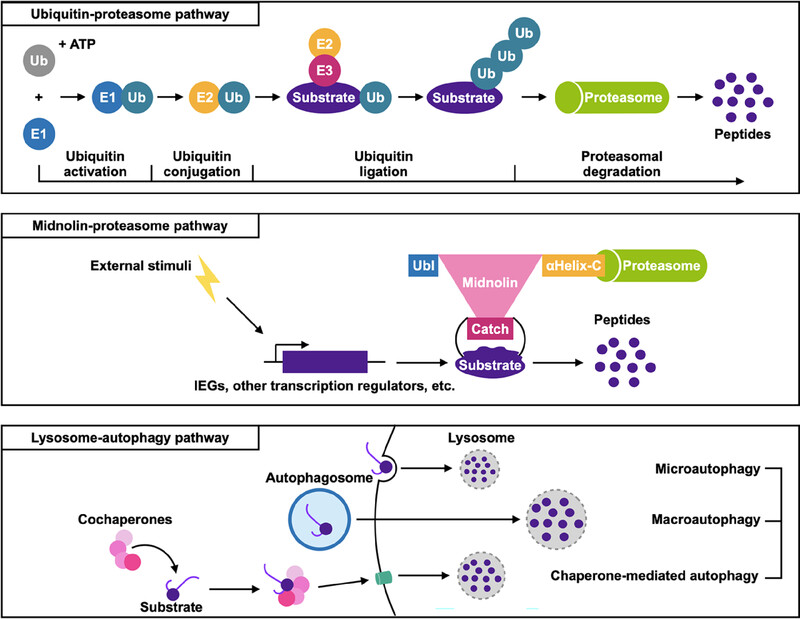
Overexpression of immediate-early genes (IEGs) has been linked to was associated with cancer progression and prognosis. In a recent study, Gu et al. reported the midnolin-proteasome pathway, a novel ubiquitin-independent proteasomal degradation. 1 The study provided the mechanism of rapid degradation for nuclear proteins with high unsteadiness. Targeting the midnolin-proteasome pathway might be beneficial for cancer therapy.
The determinants associated with zoonotic potential of influenza A viruses: BTN3A3 evasion mediated by residue mutation in the nucleoprotein
- First Published: 02 December 2023
Preoperative treatment of locally advanced rectal cancer: less is more
- First Published: 07 December 2023
Activating the STING pathway to prevent dormant metastasis in lung adenocarcinoma
- First Published: 13 December 2023
SARS-CoV-2 booster immunization: stimulating de novo B-cell response and antibody generation
- First Published: 19 December 2023
LETTER
Short-term fasting attenuates lipopolysaccharide/D-galactosamine-induced acute liver failure through Sirt1-autophagy signaling in mice
- First Published: 15 November 2023
Transcription factor 19-mediated epigenetic regulation of FOXM1/AURKB axis contributes to proliferation in clear cell renal carcinoma cells
- First Published: 03 December 2023
FOXC1 restrains NF-κB-mediated interleukin-1β transcription in breast cancer
- First Published: 16 December 2023




